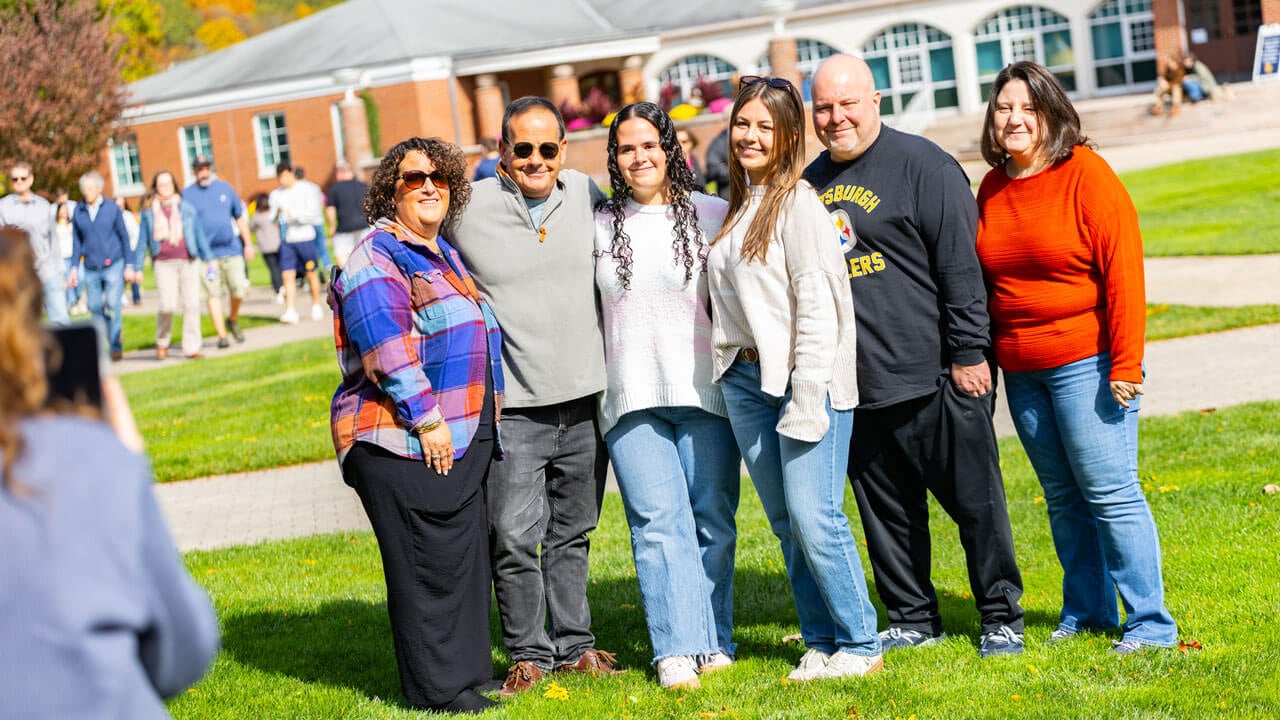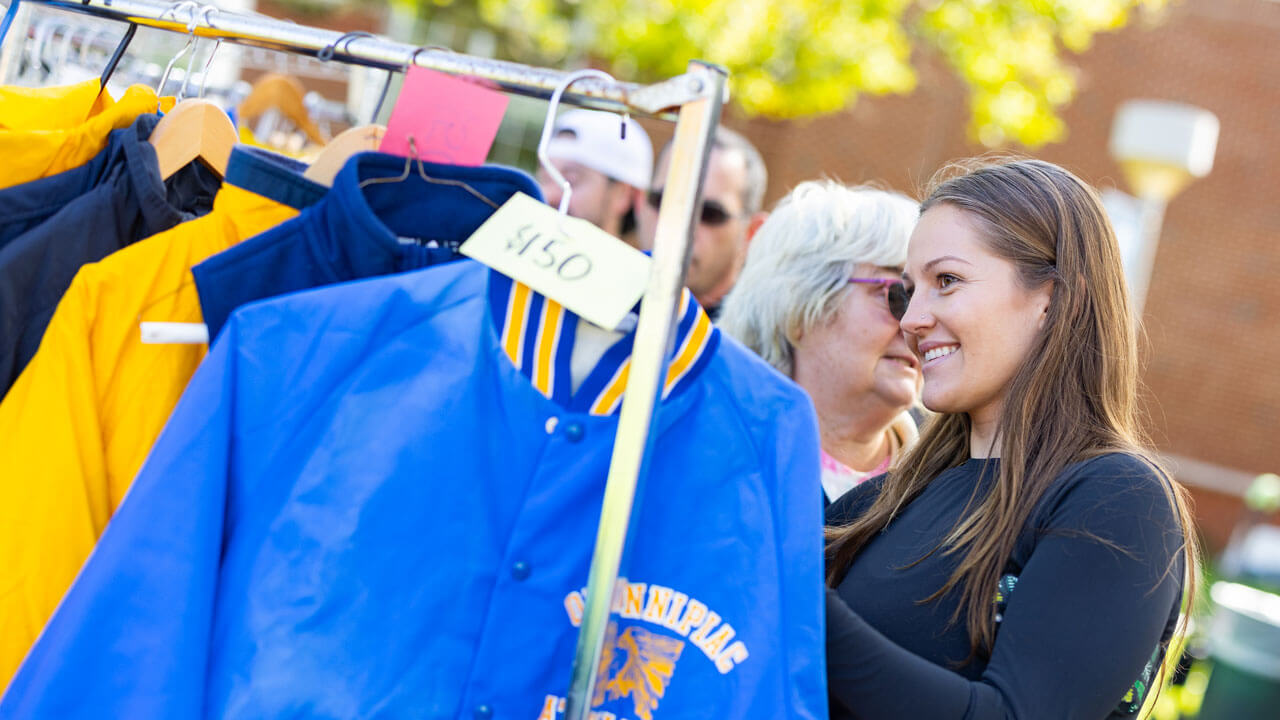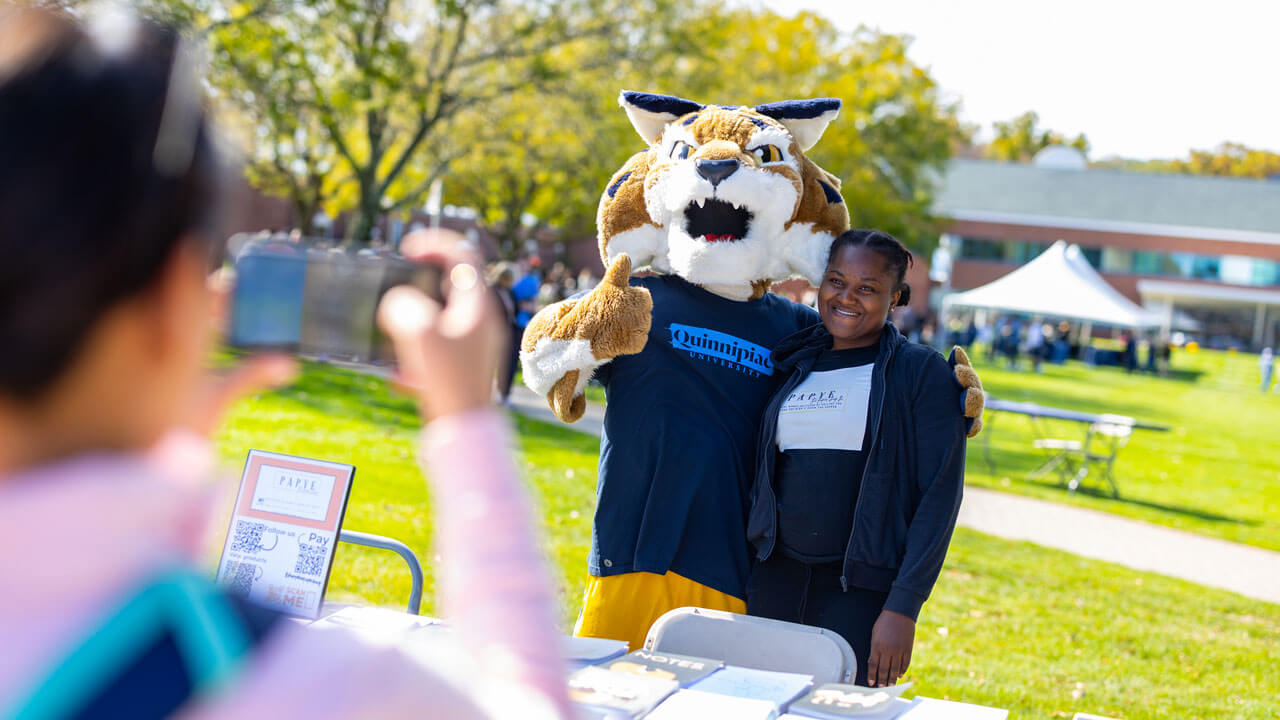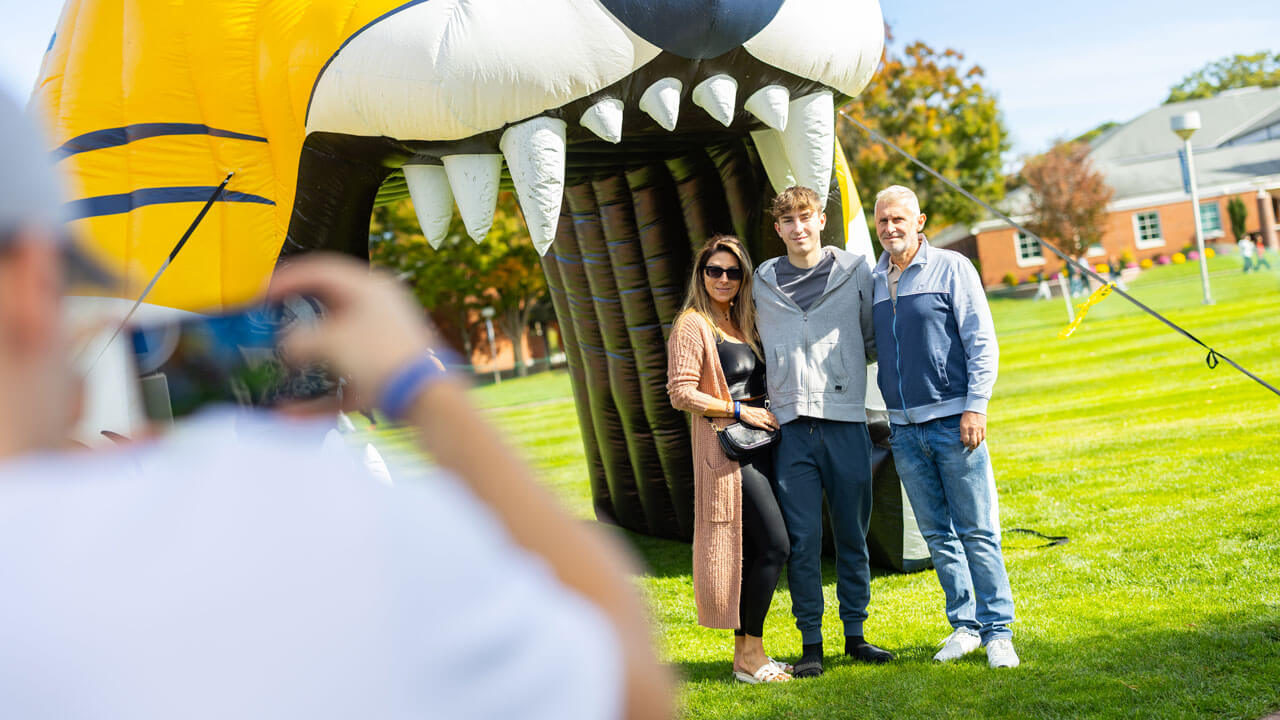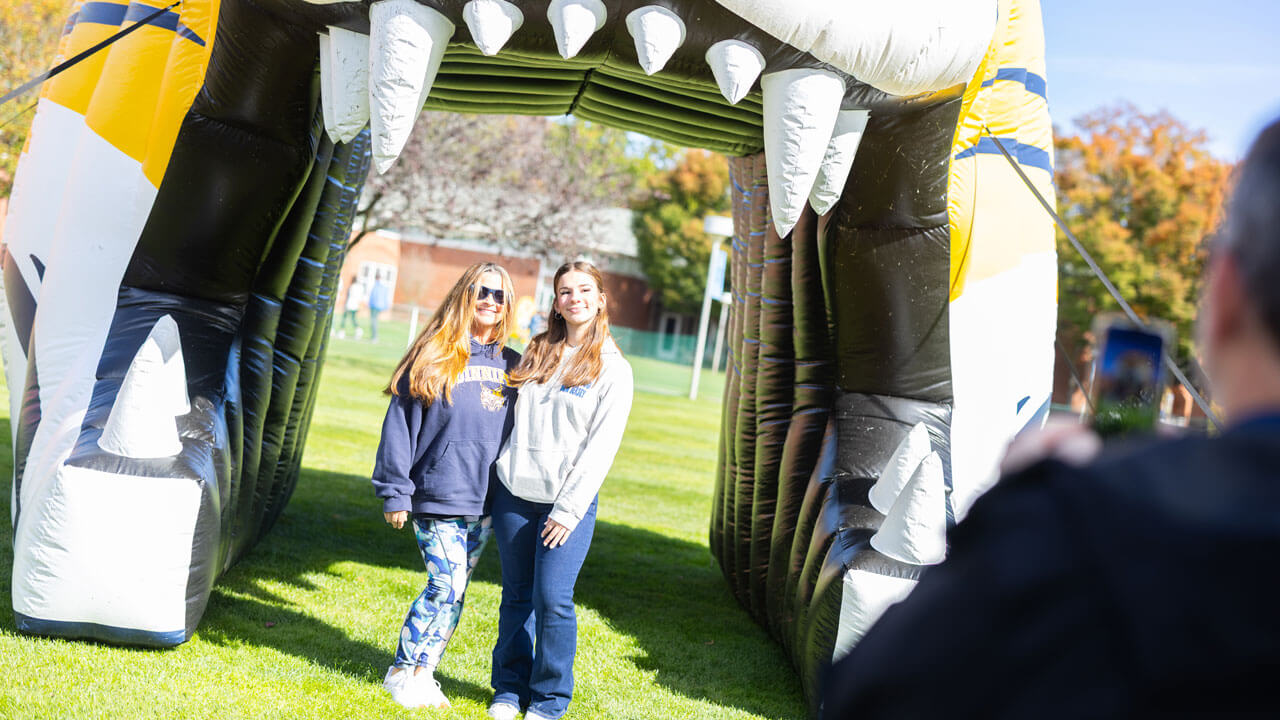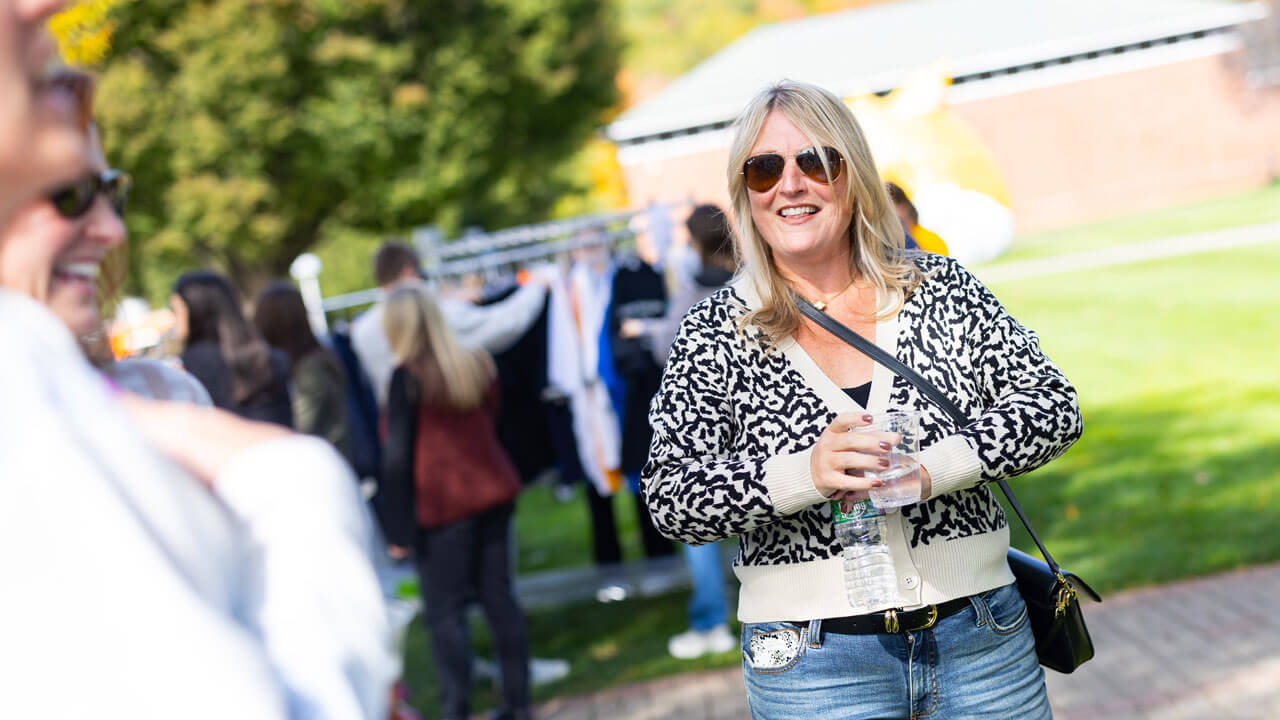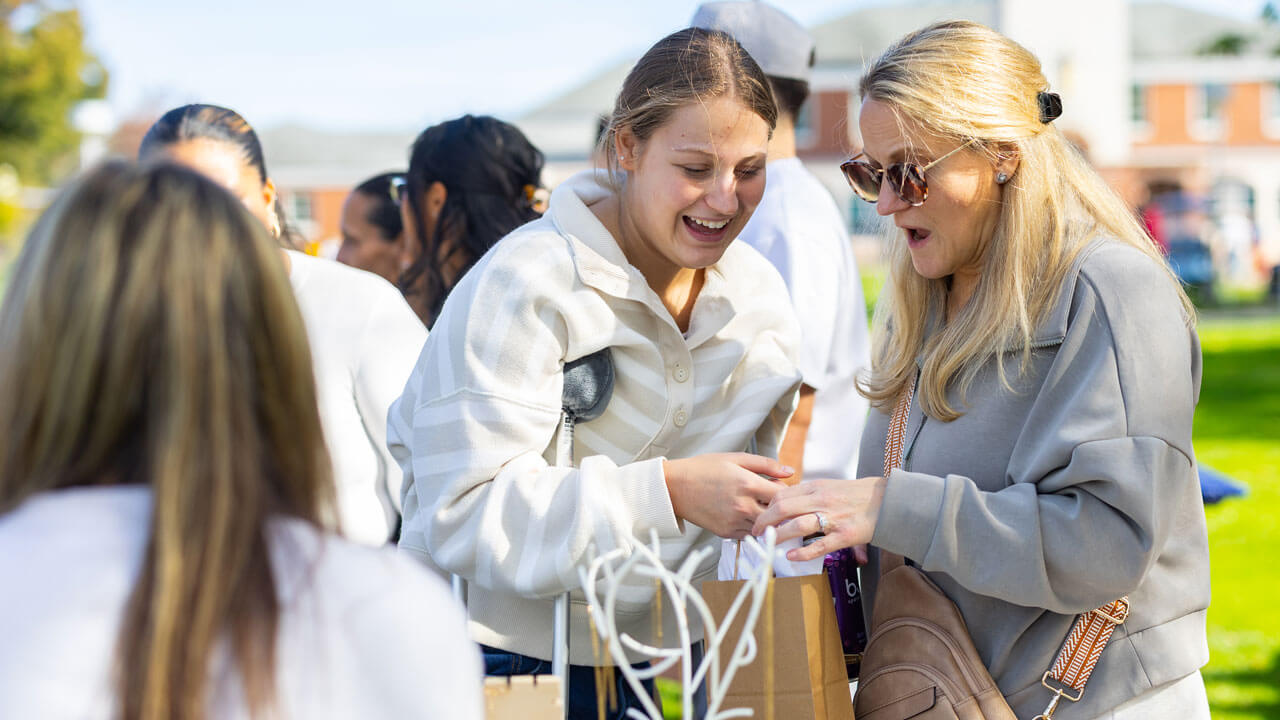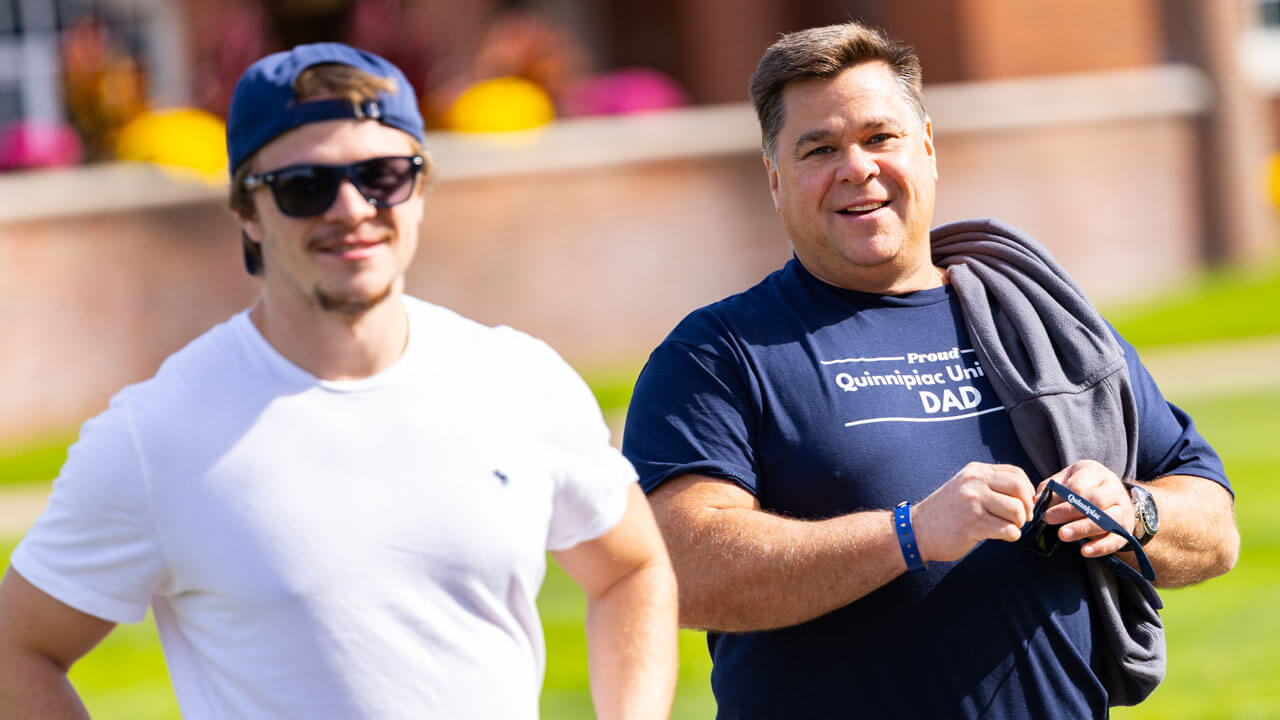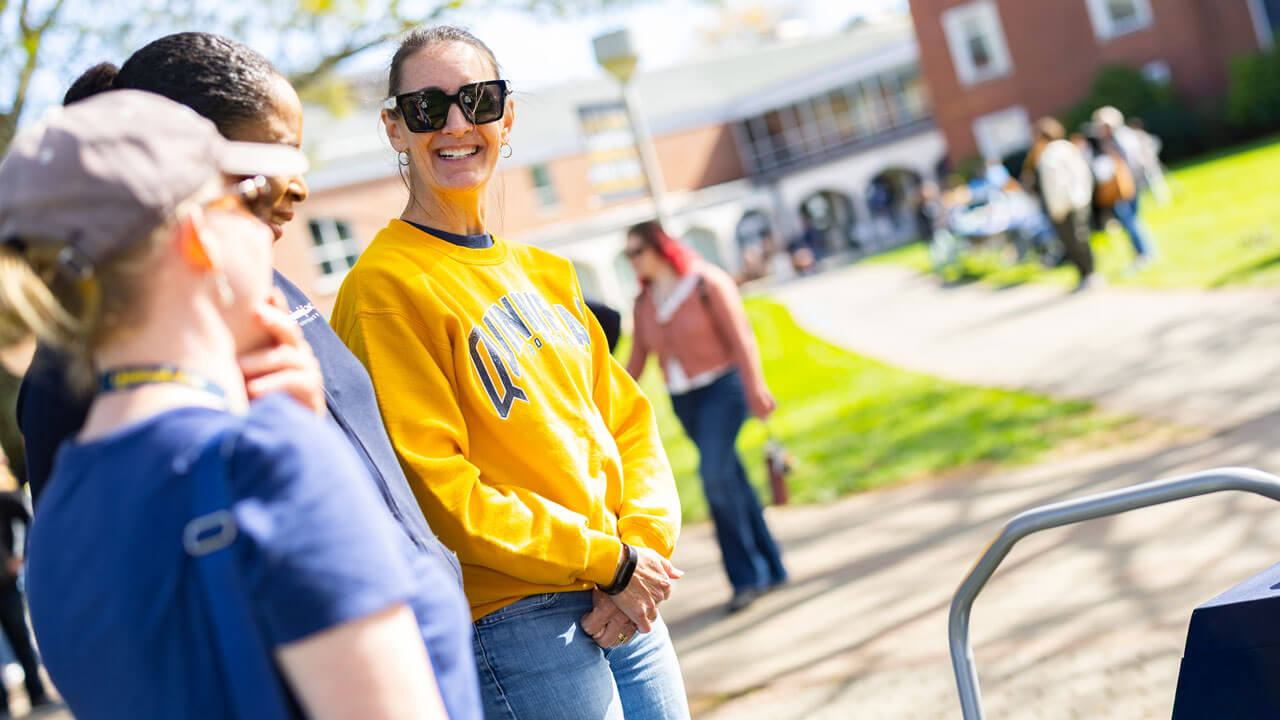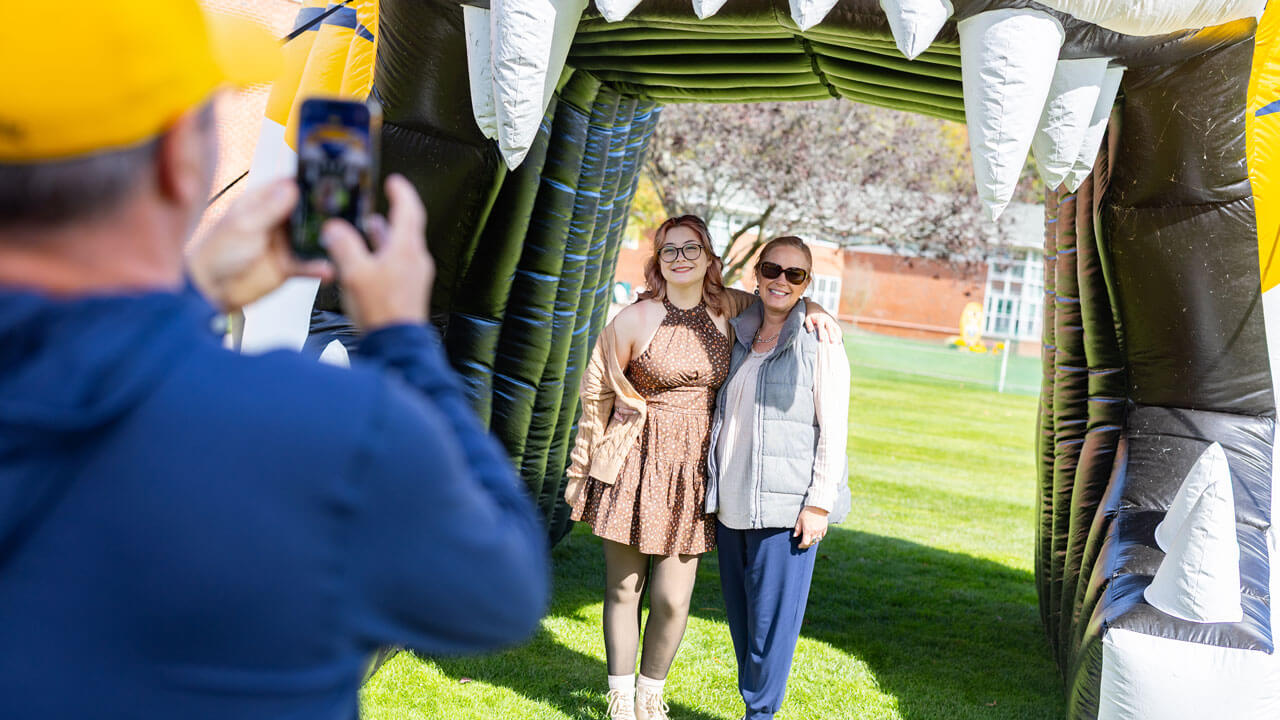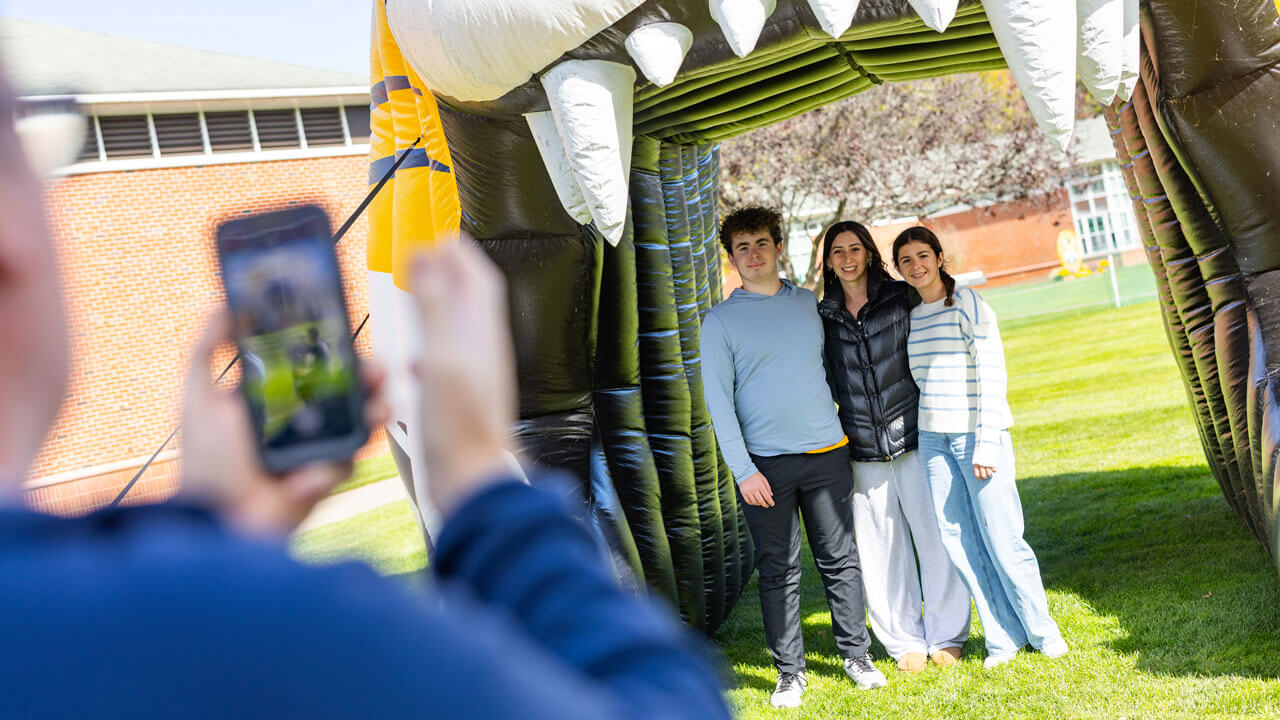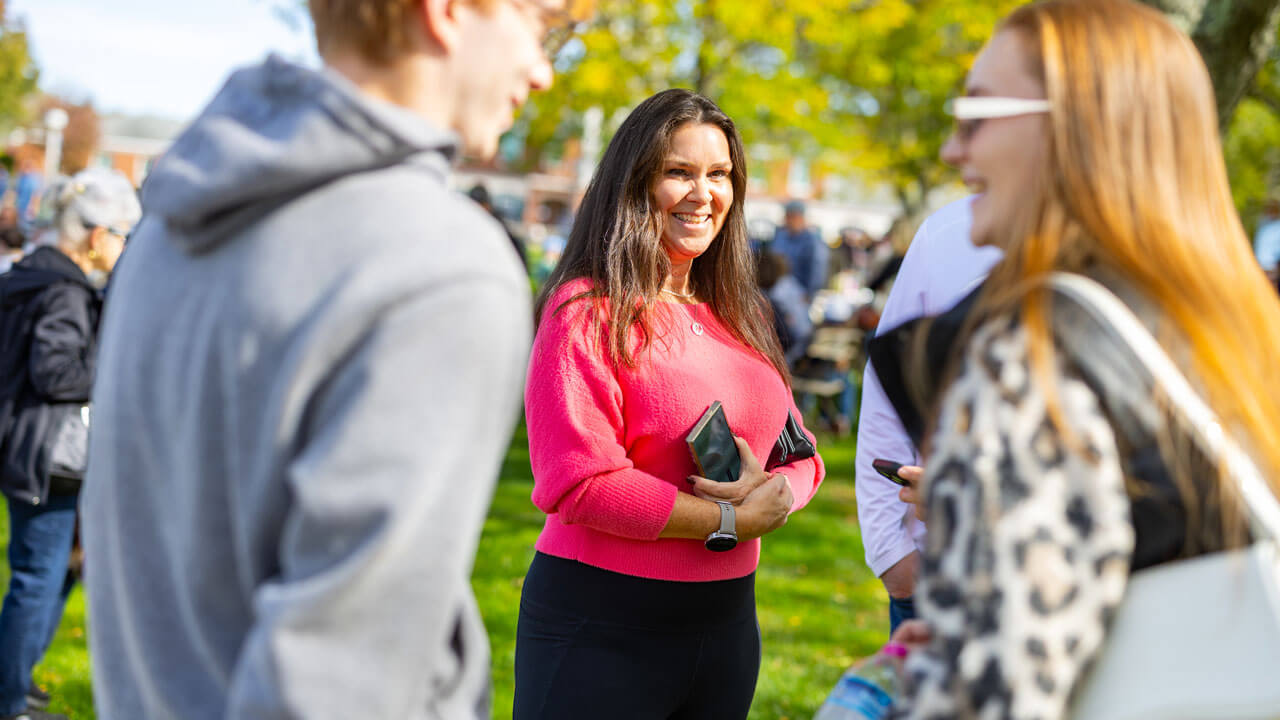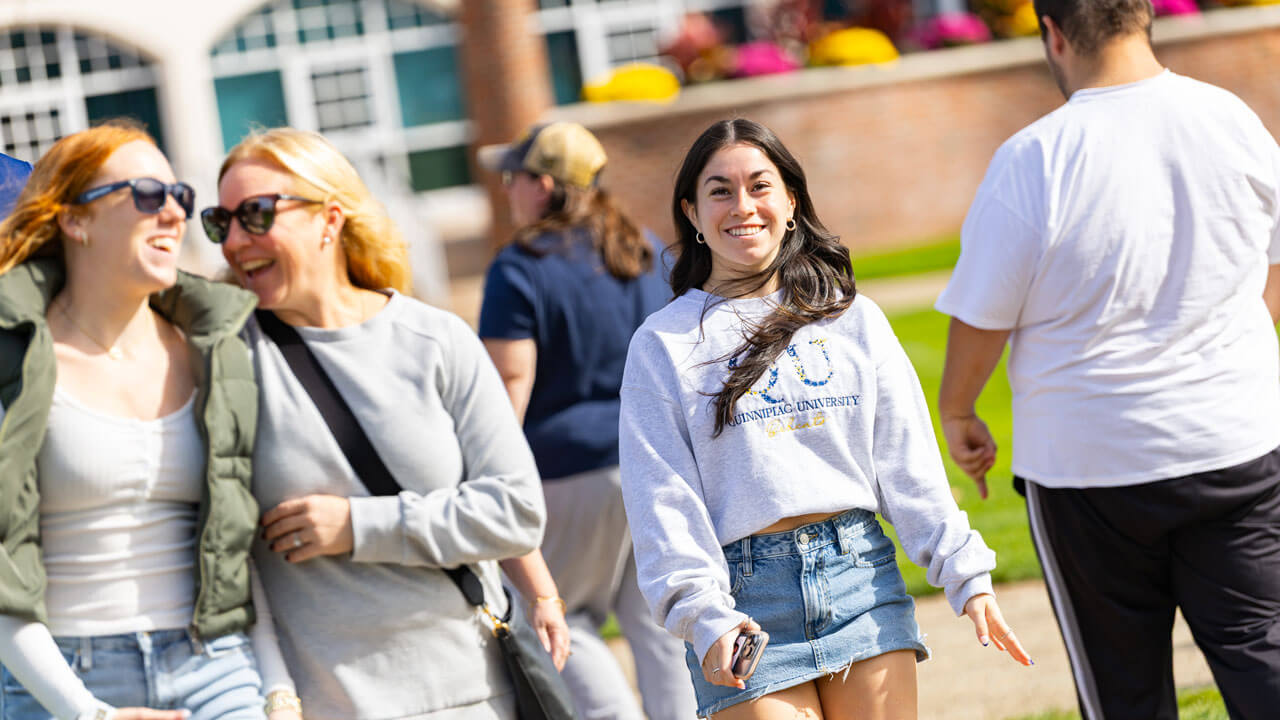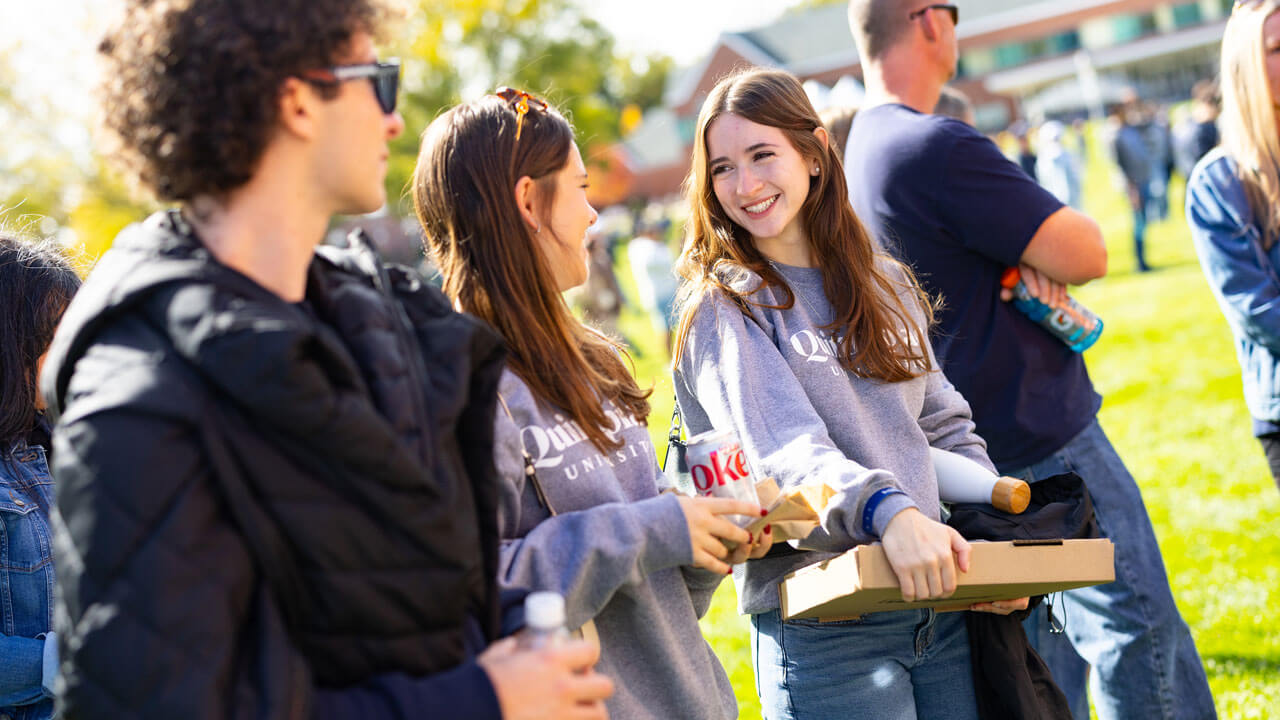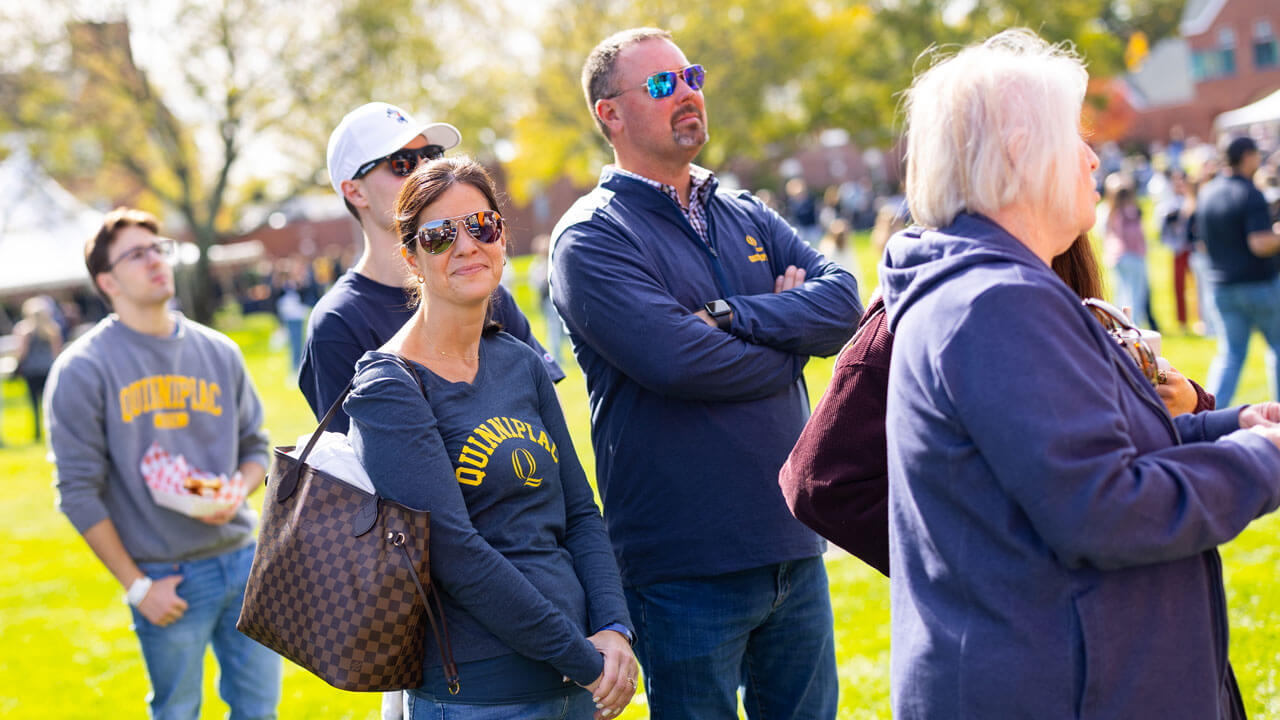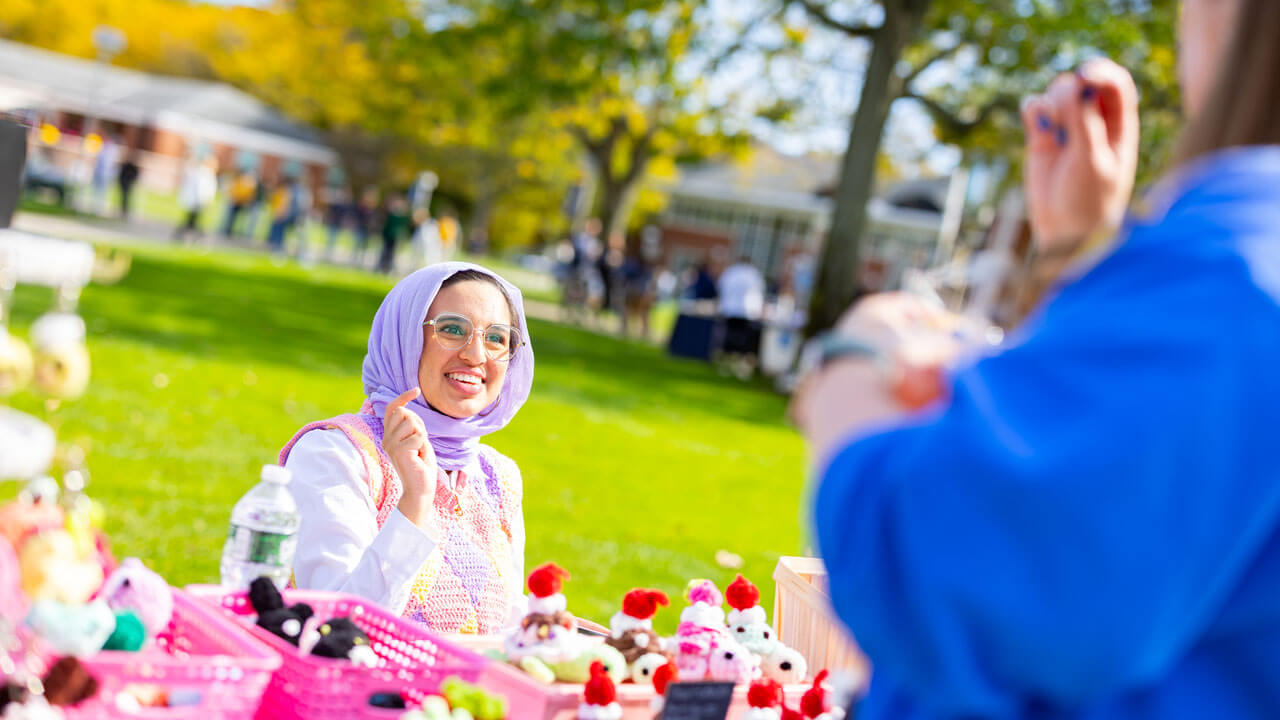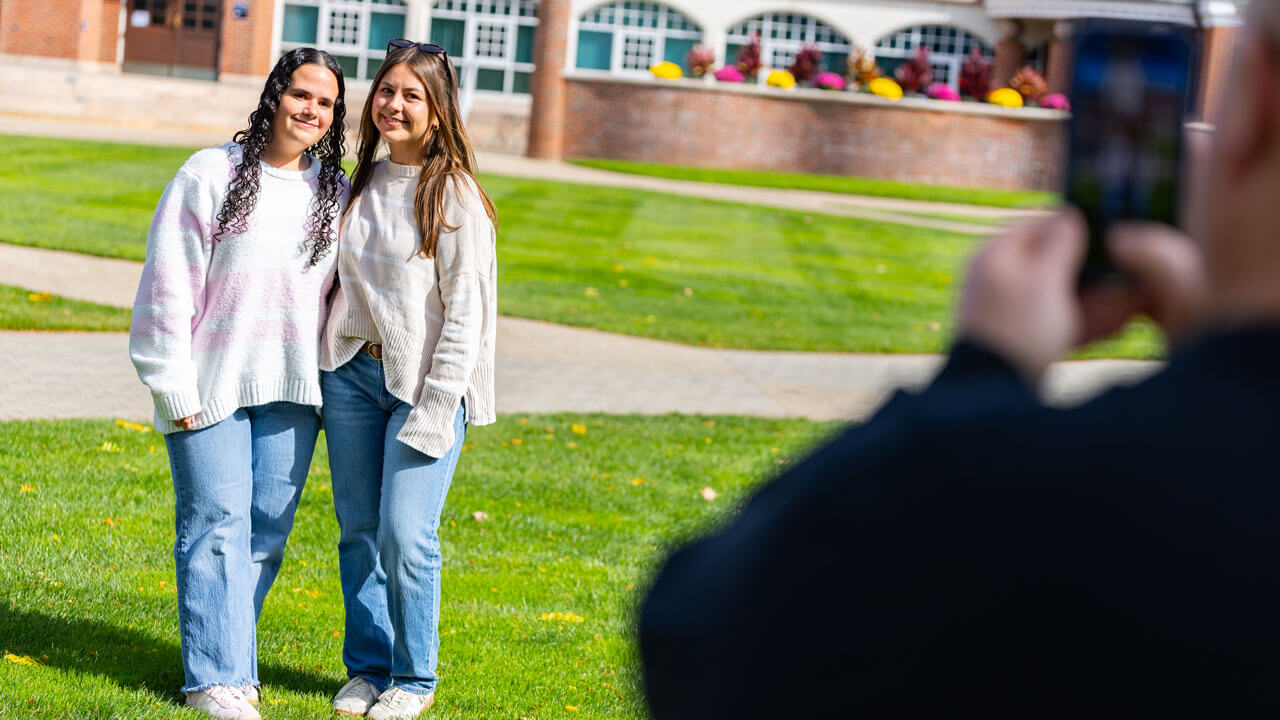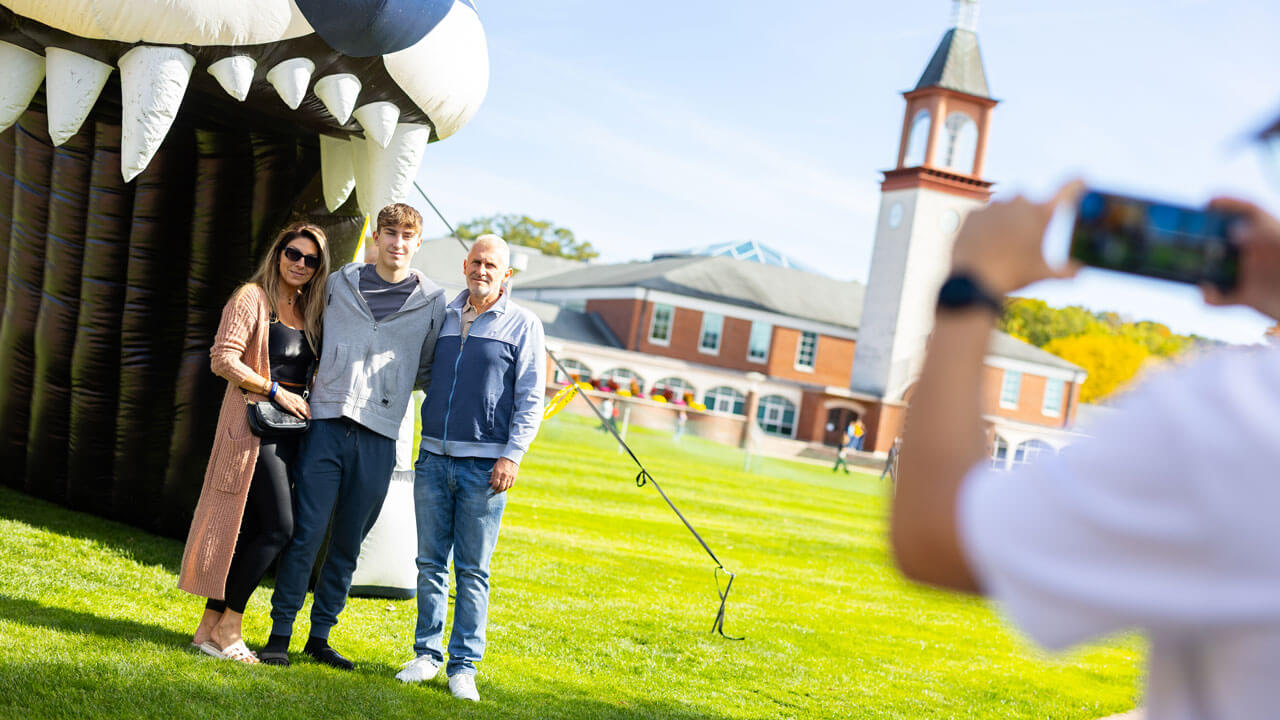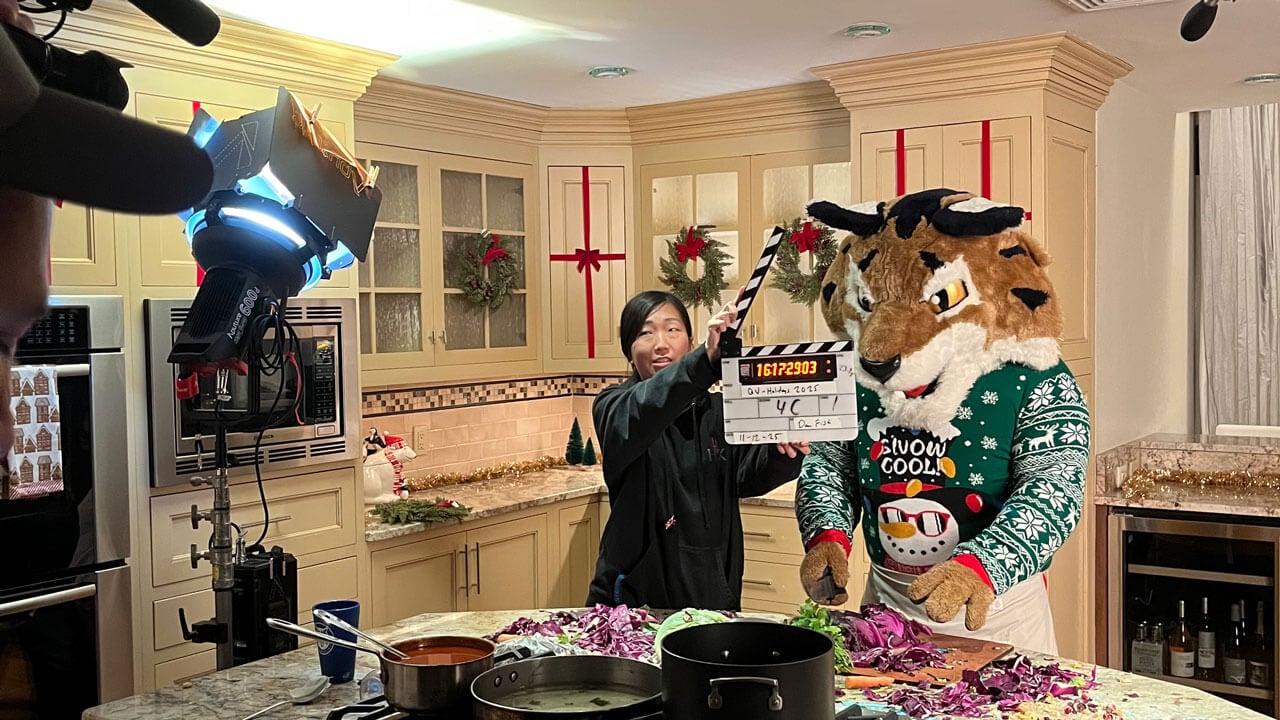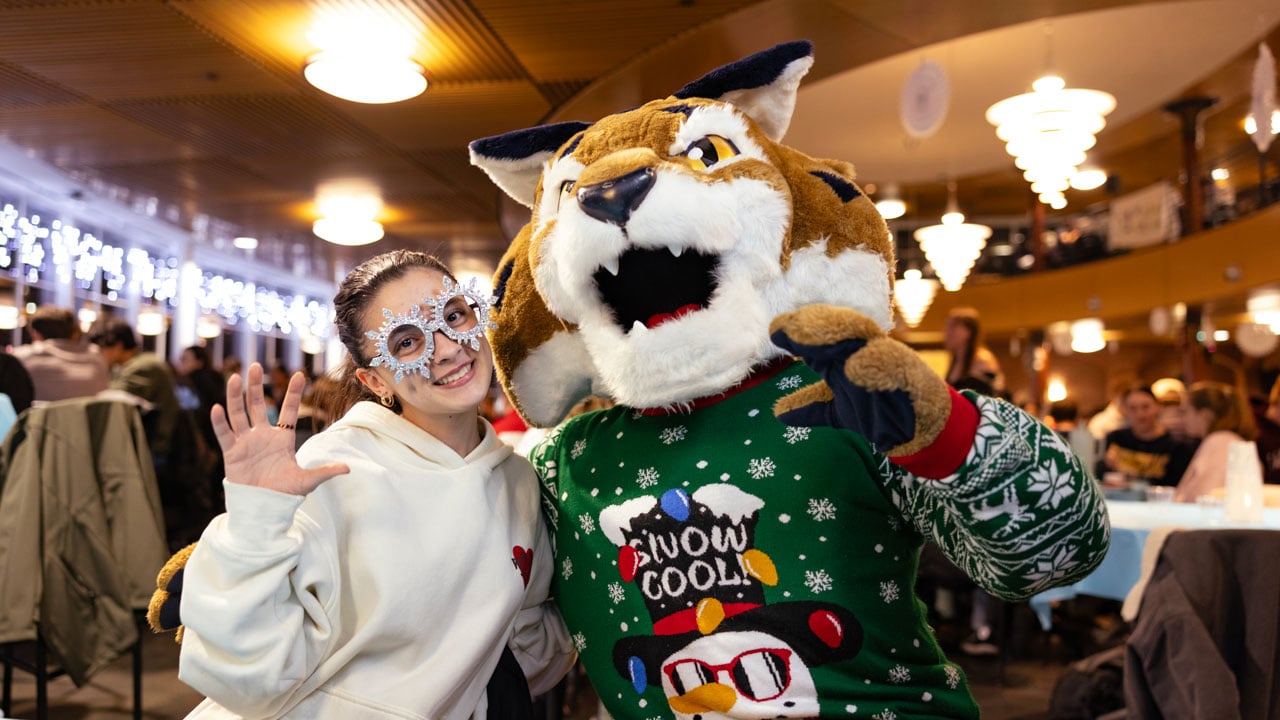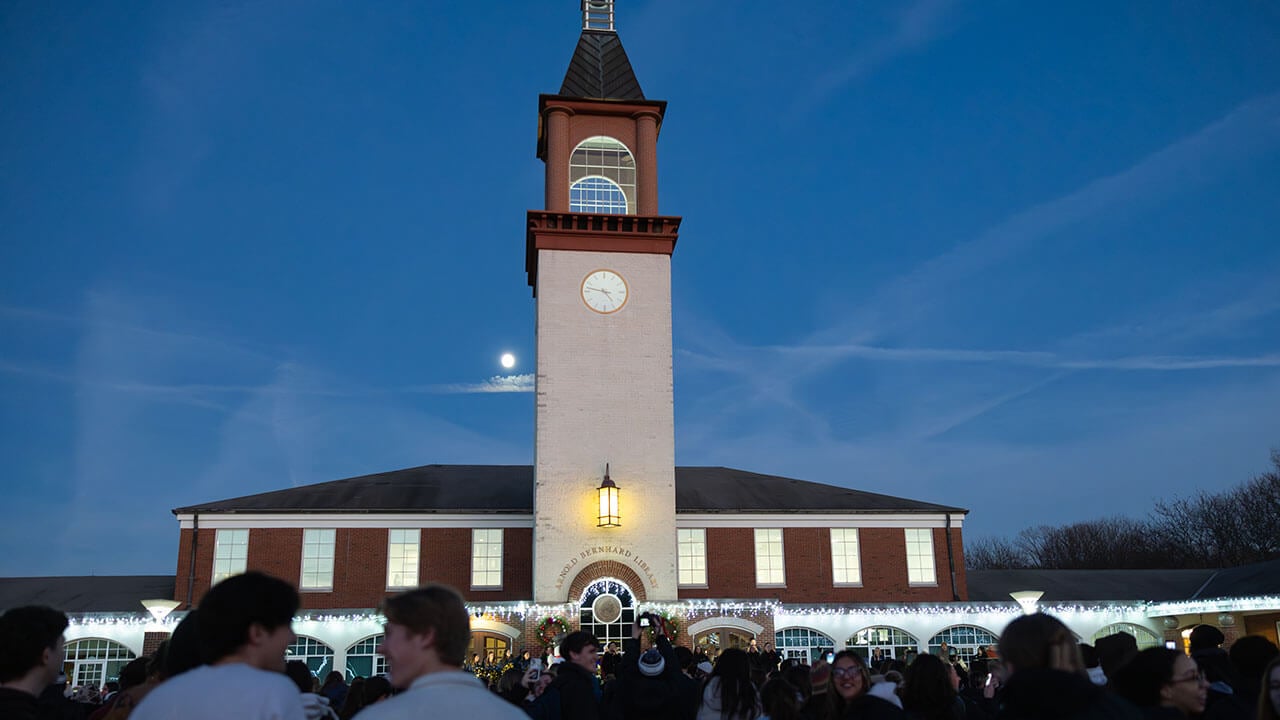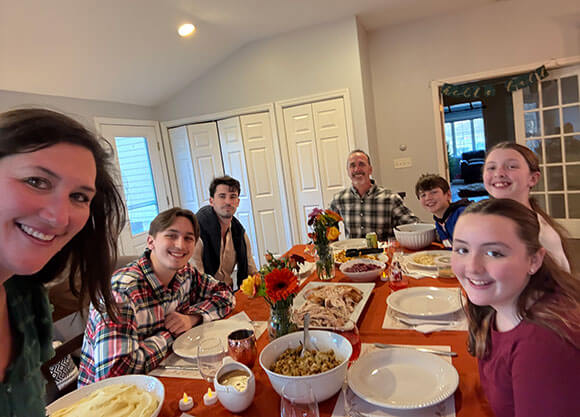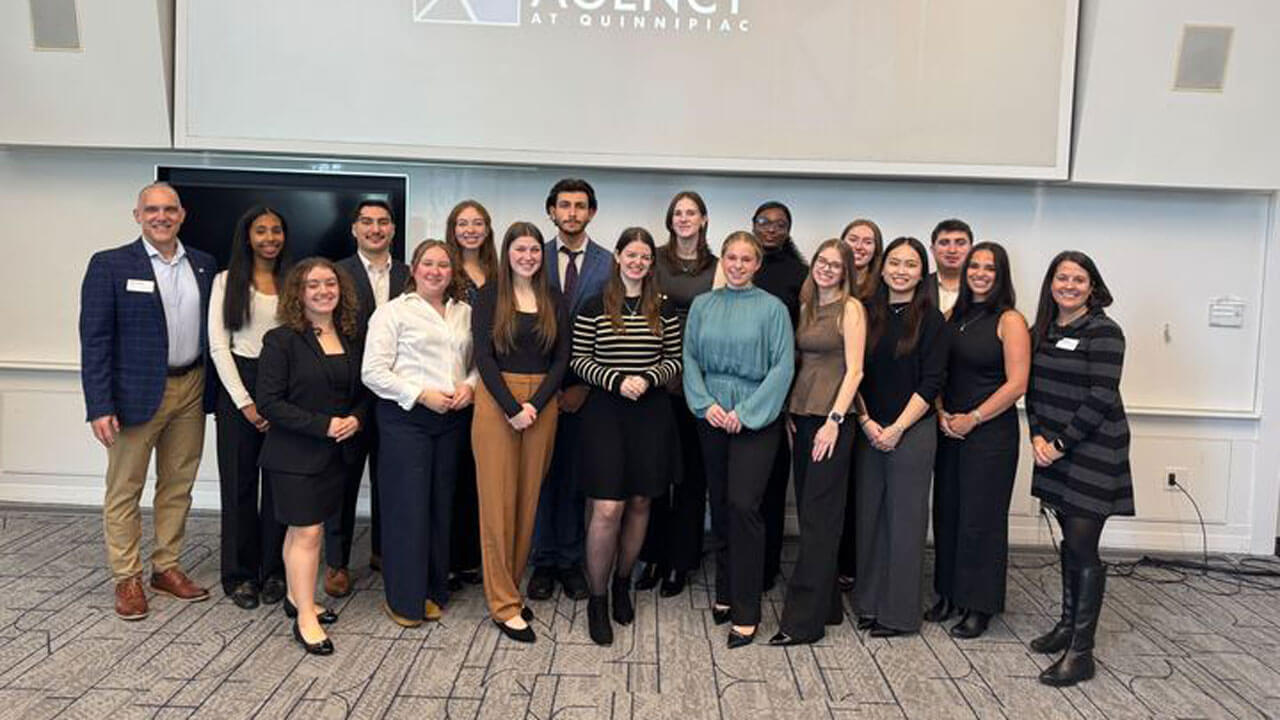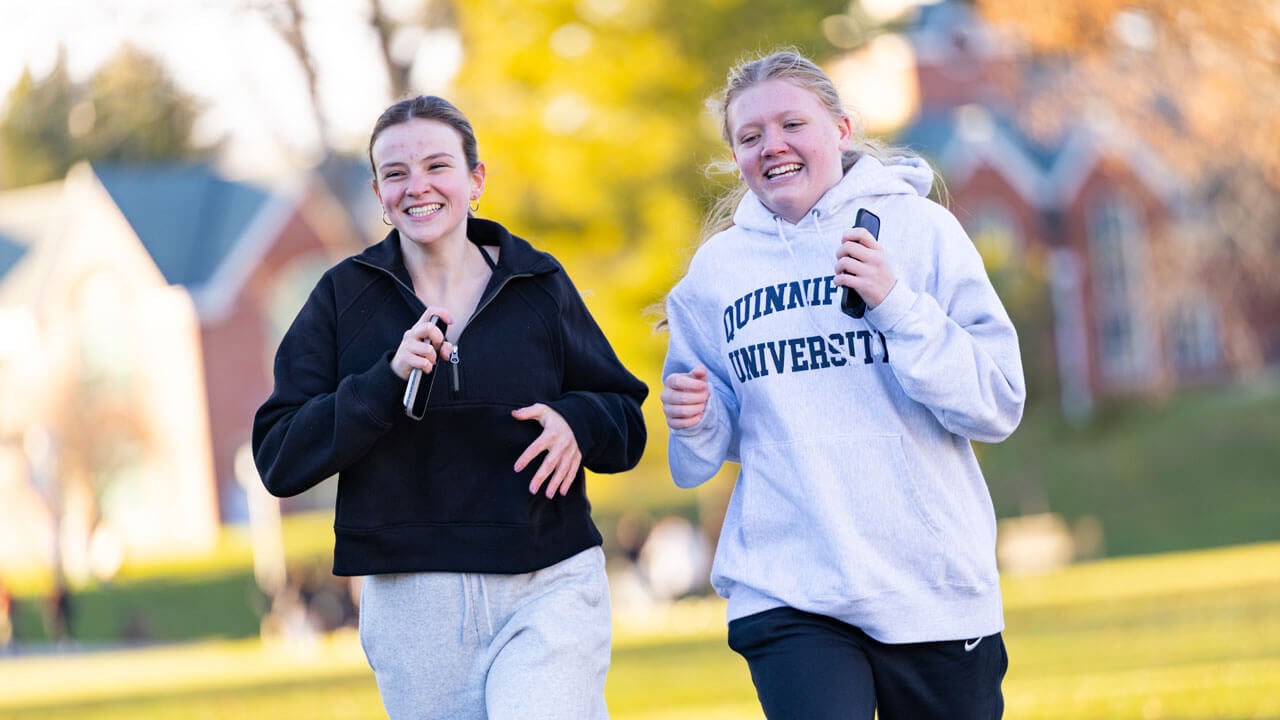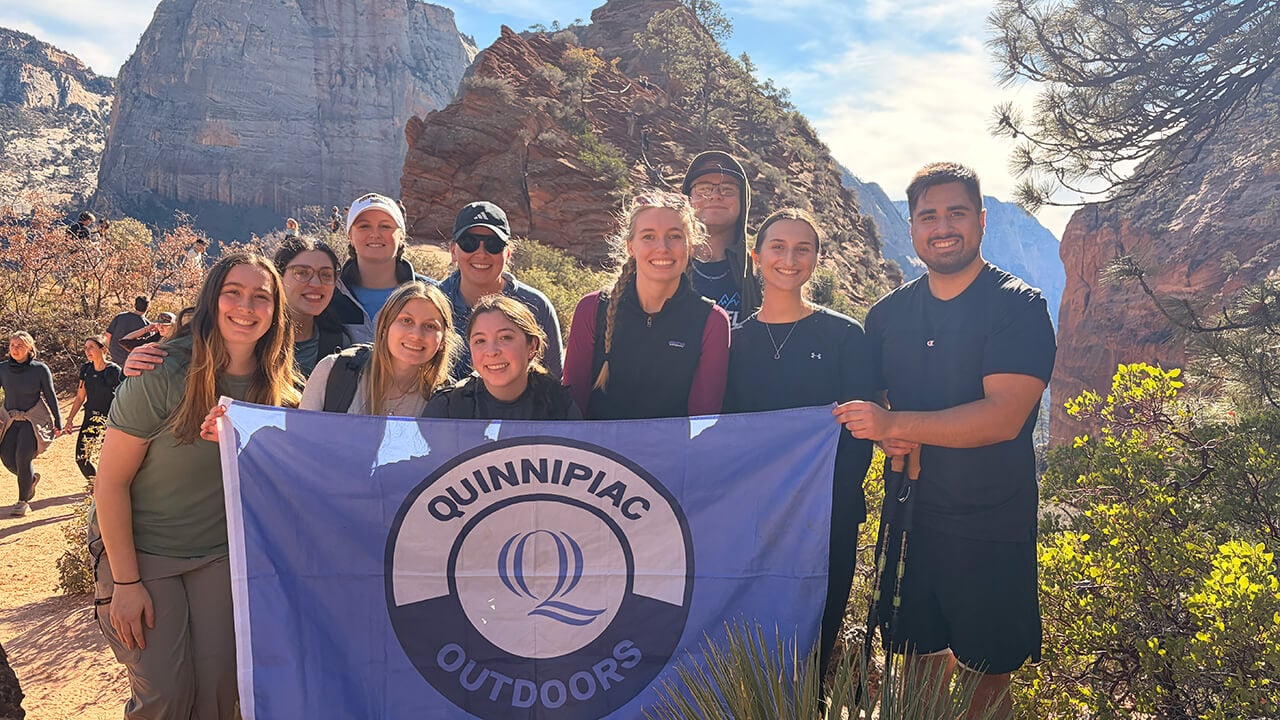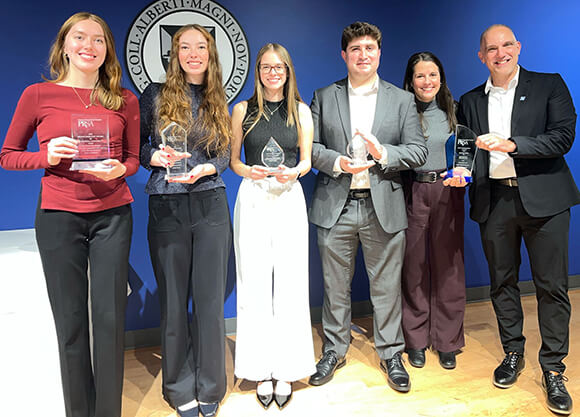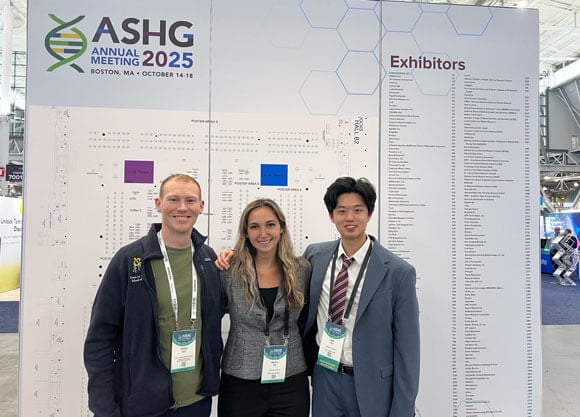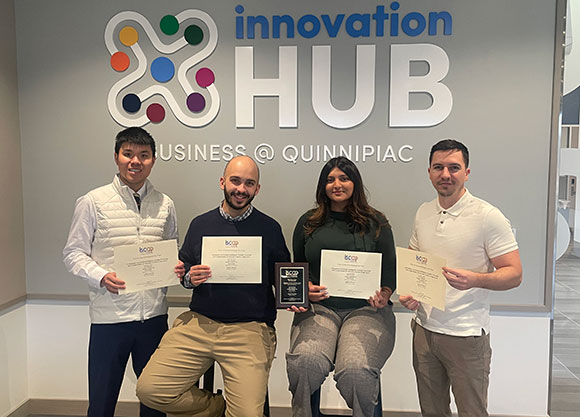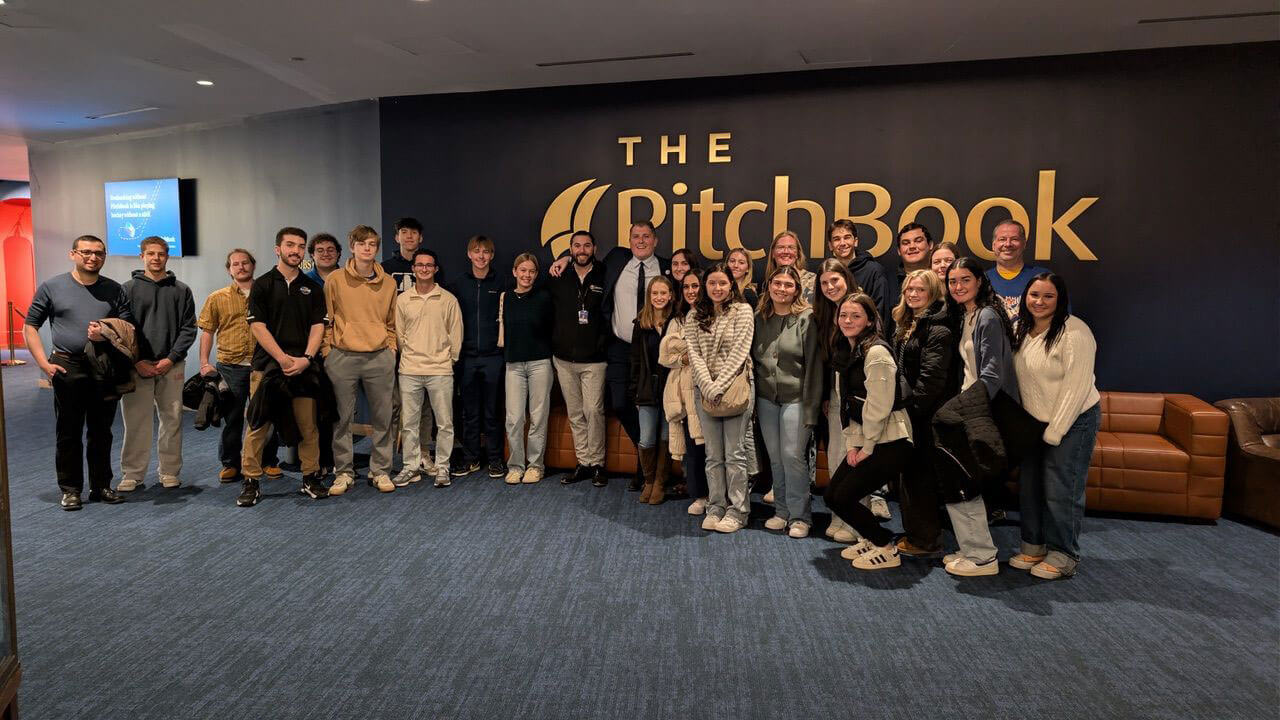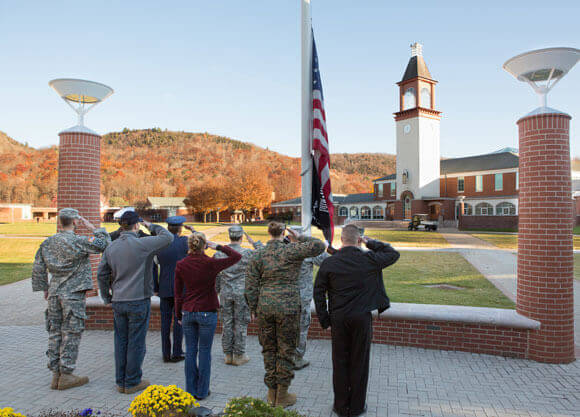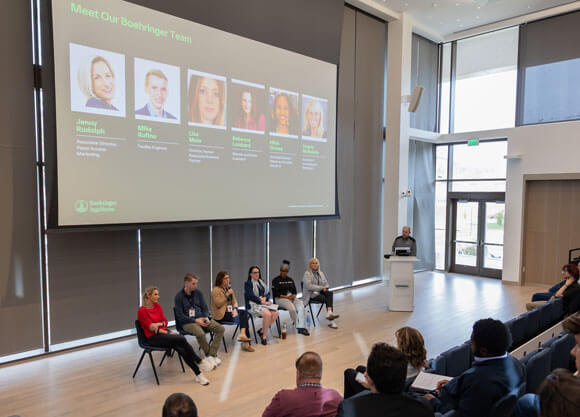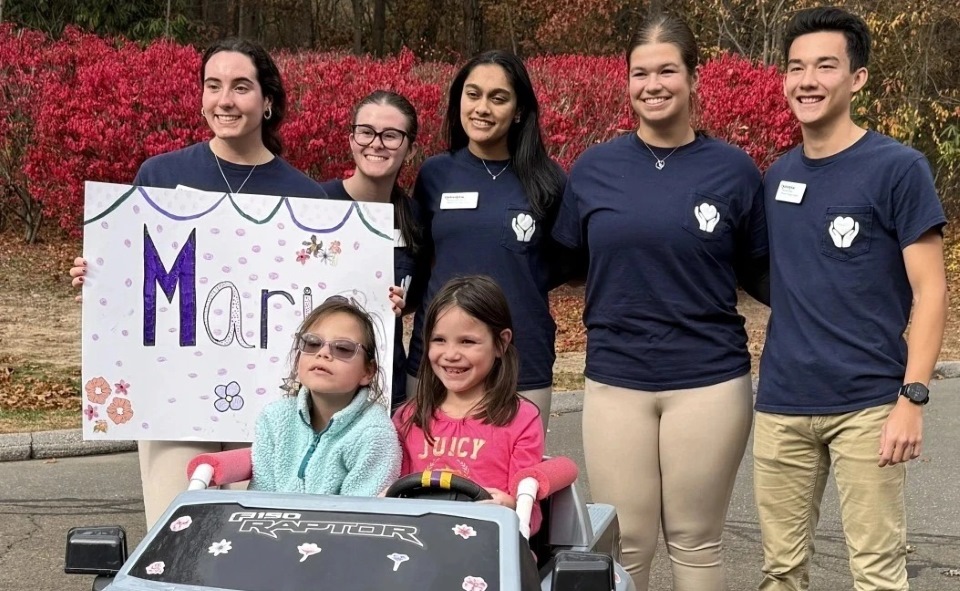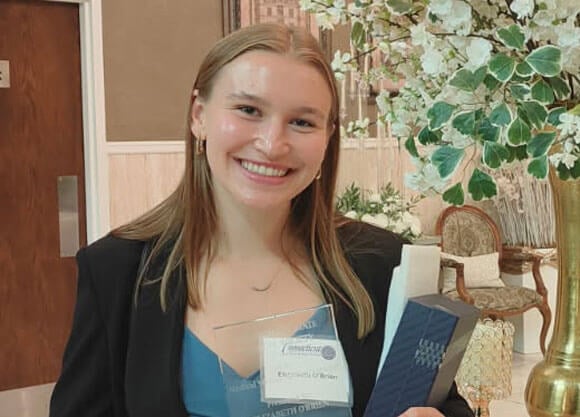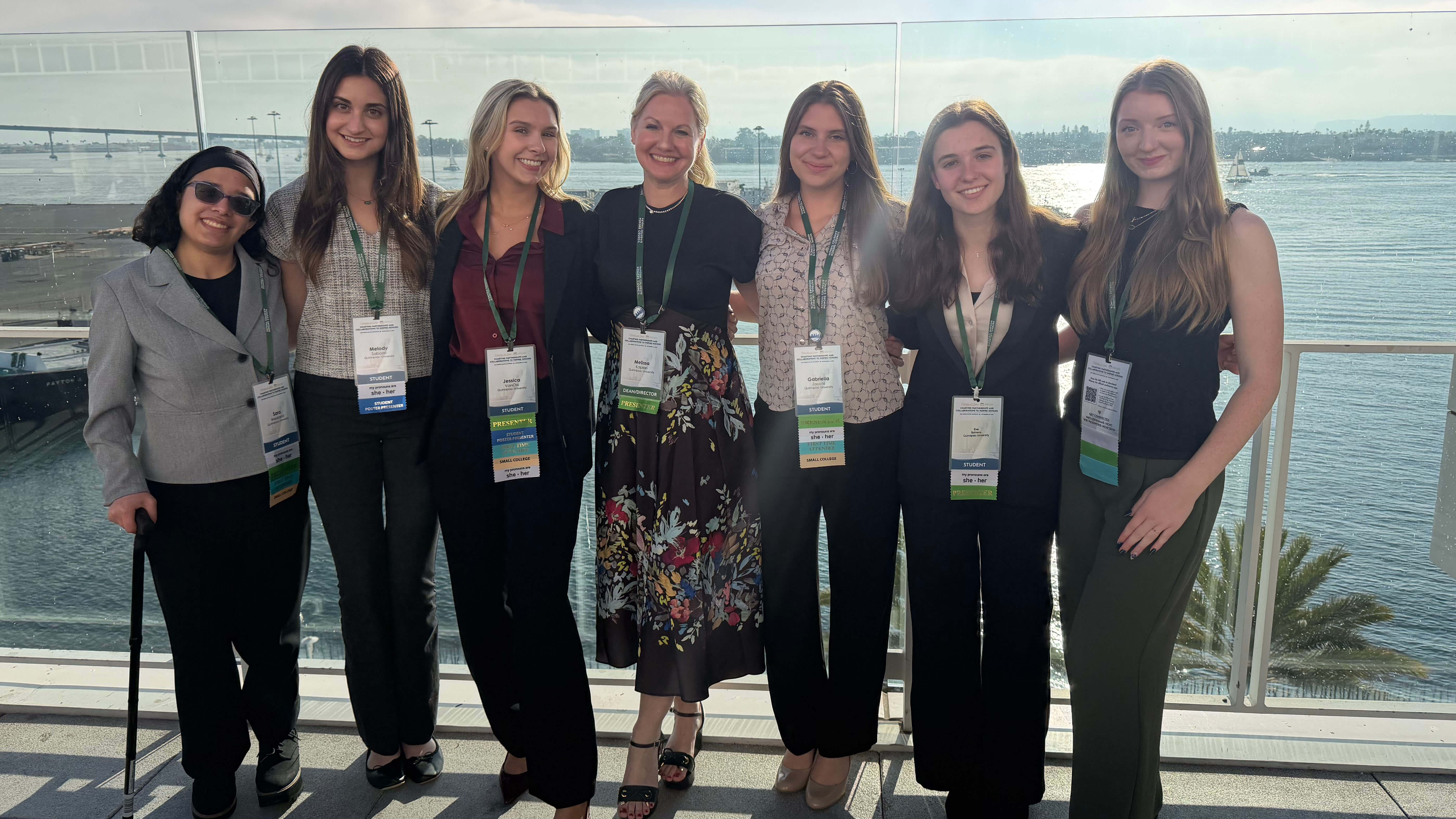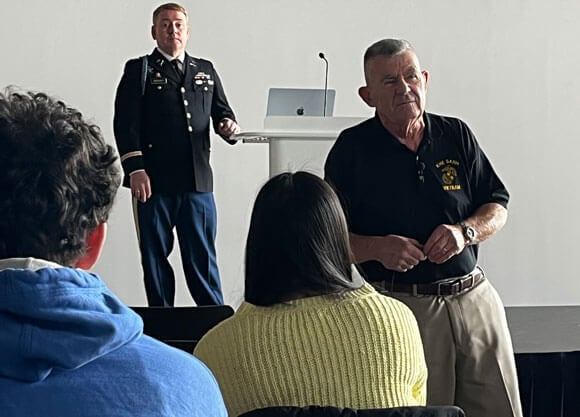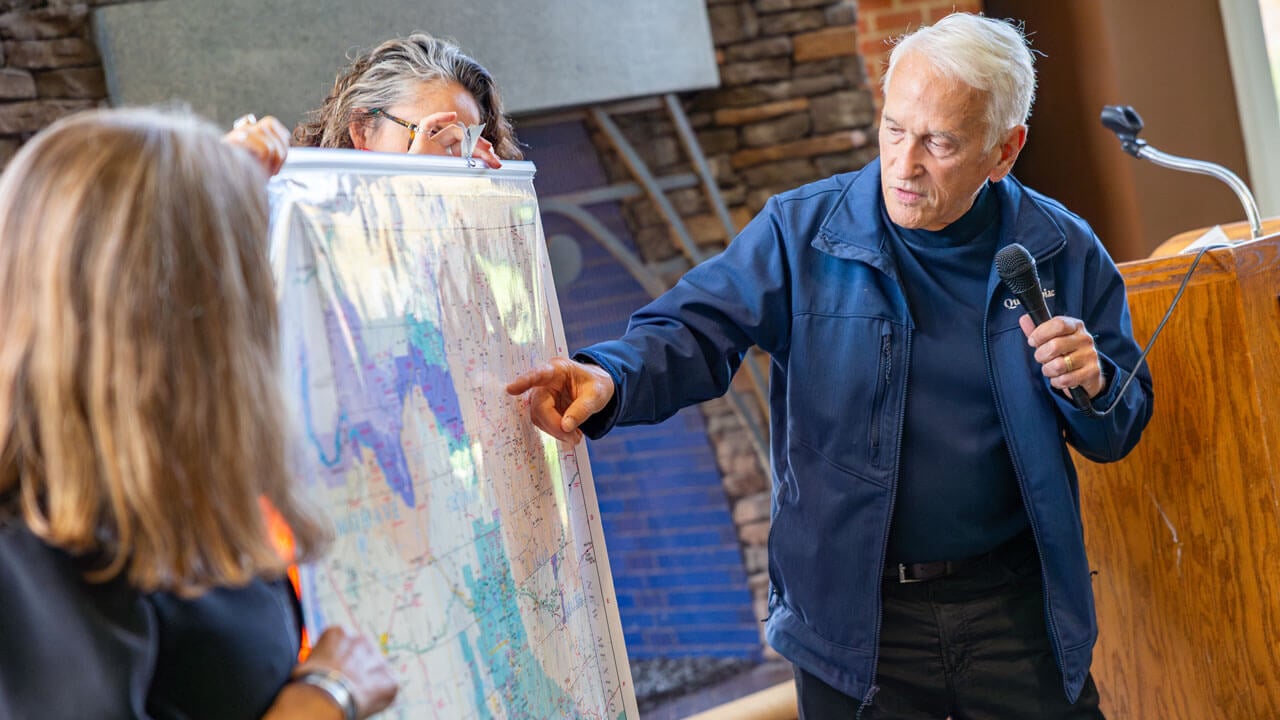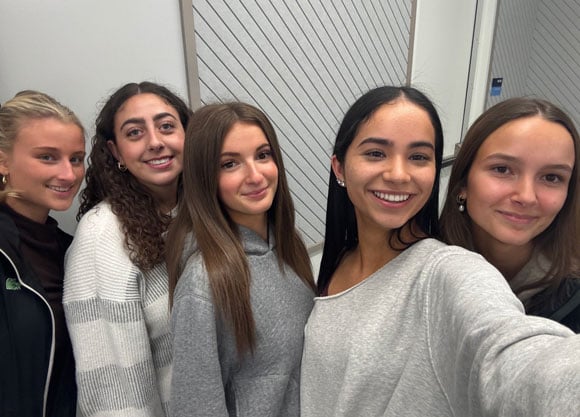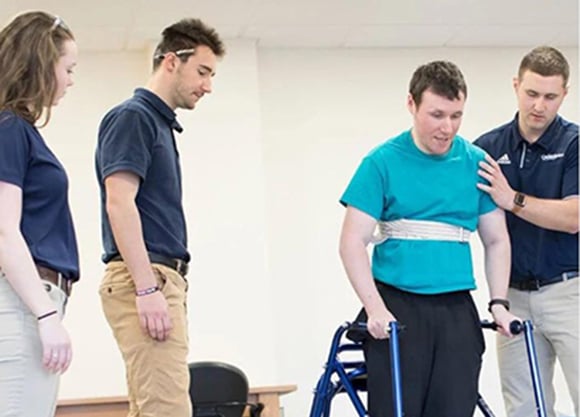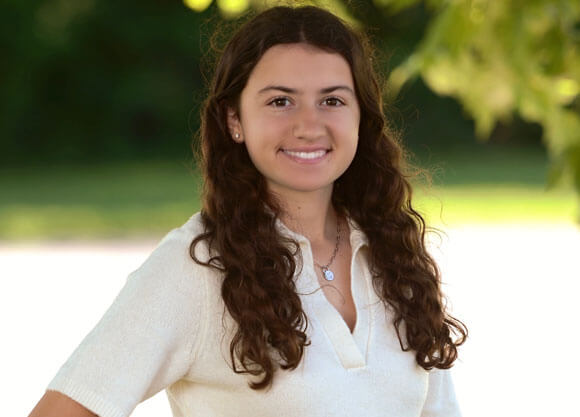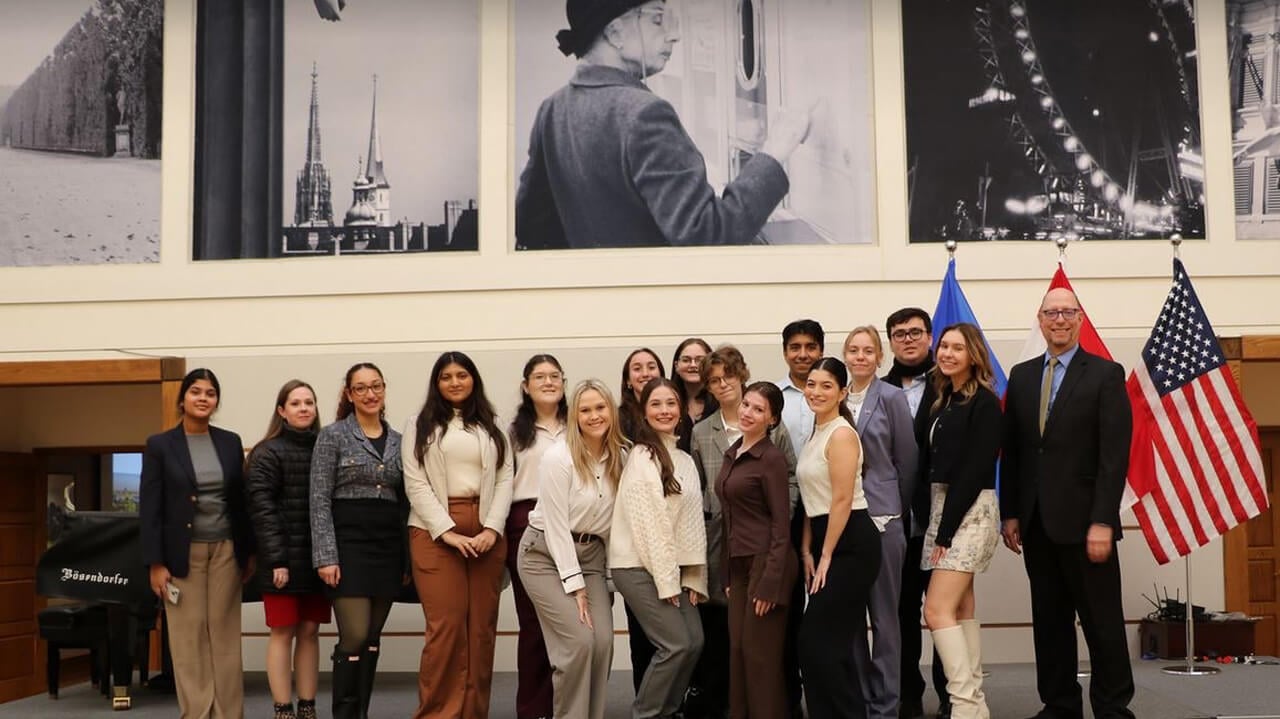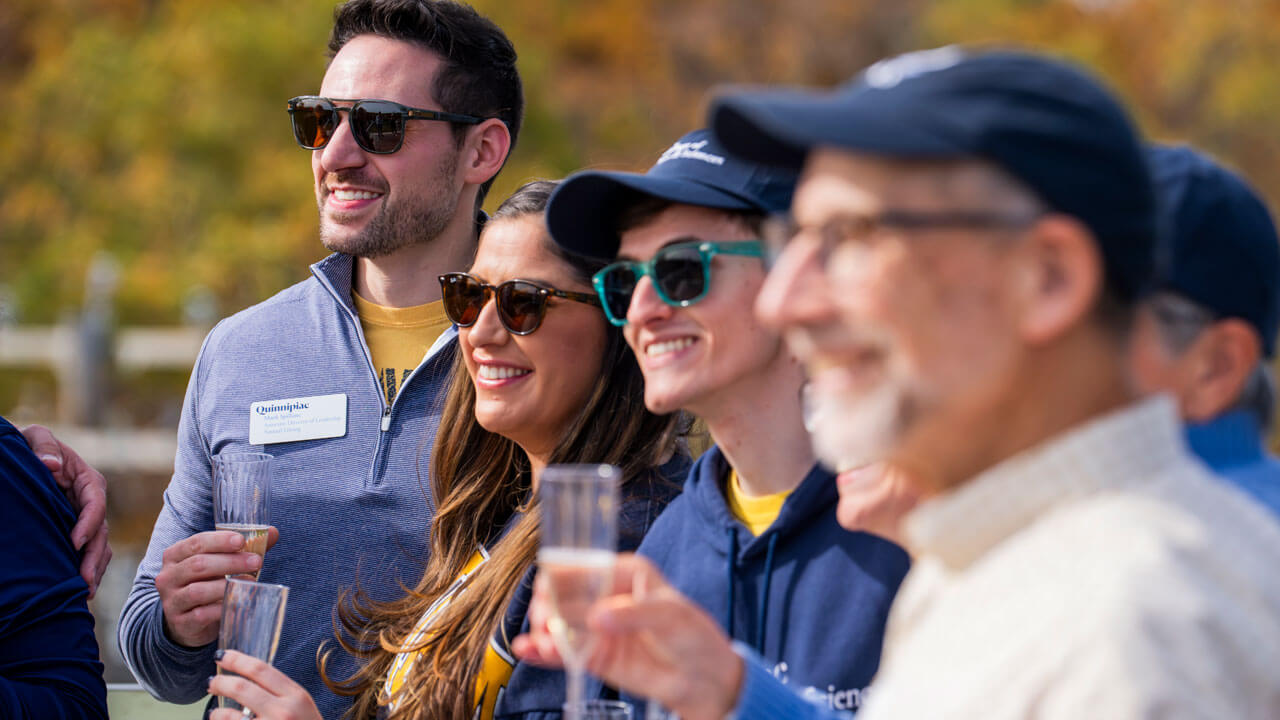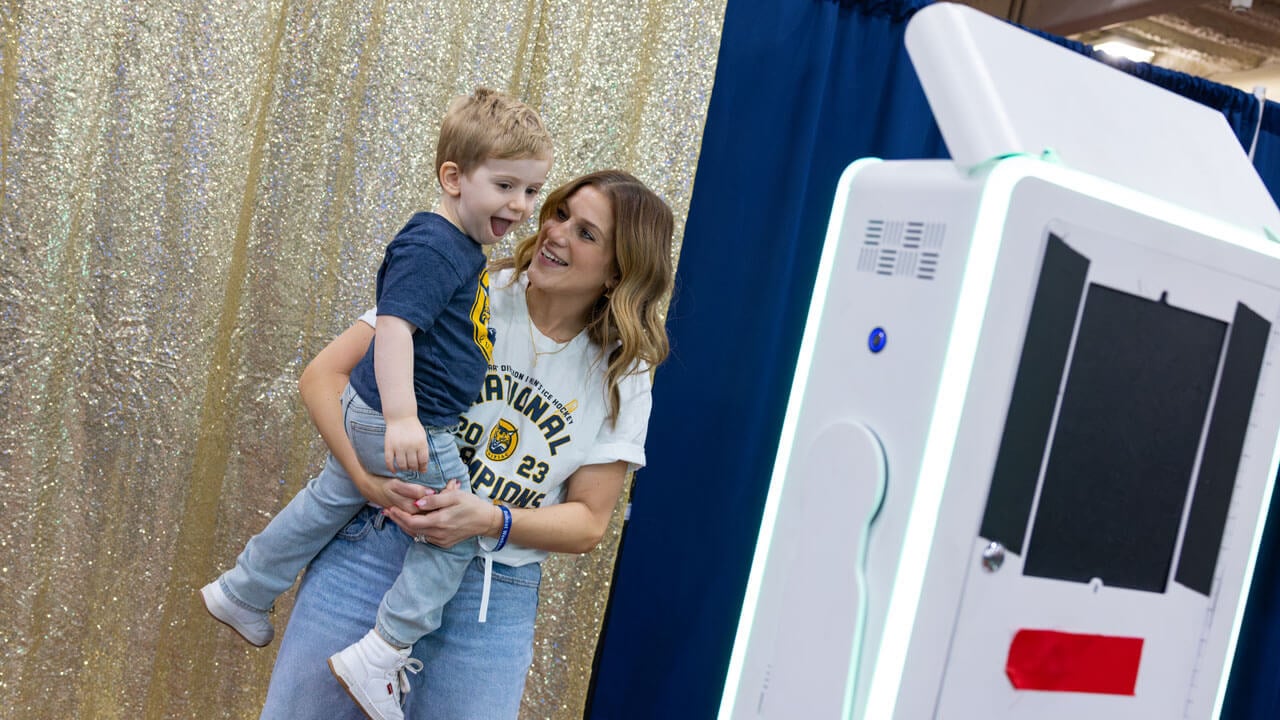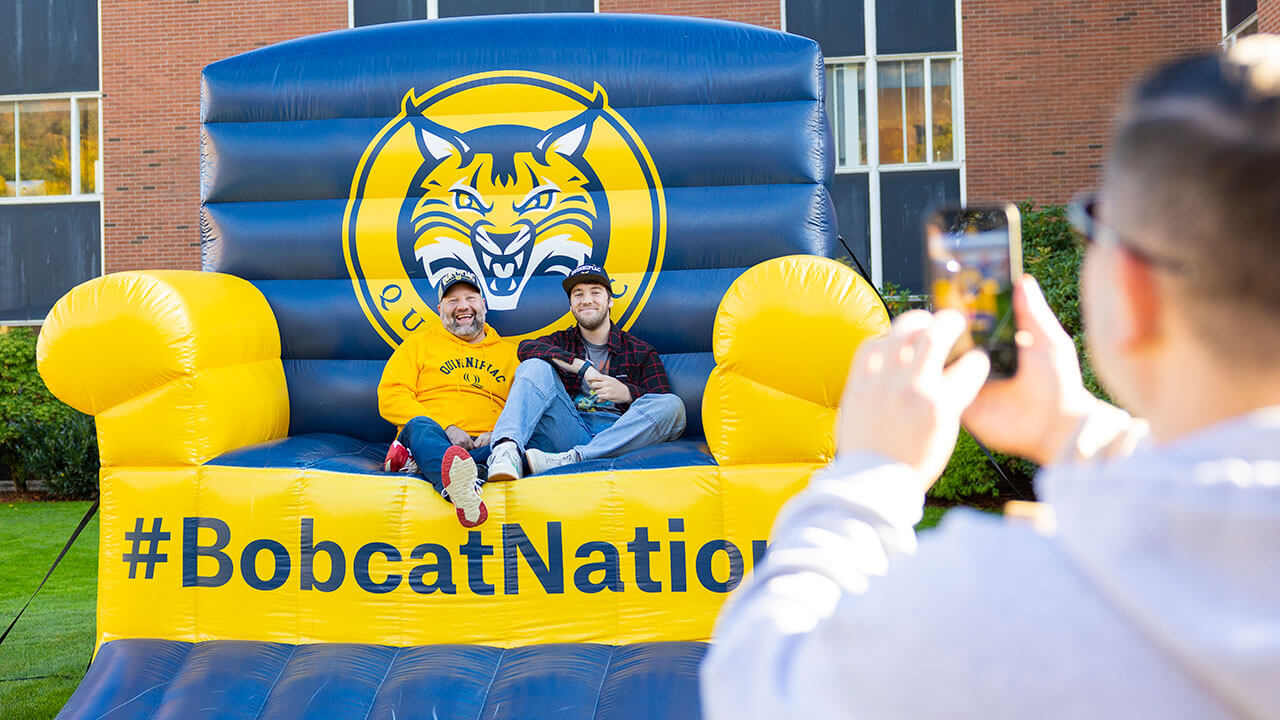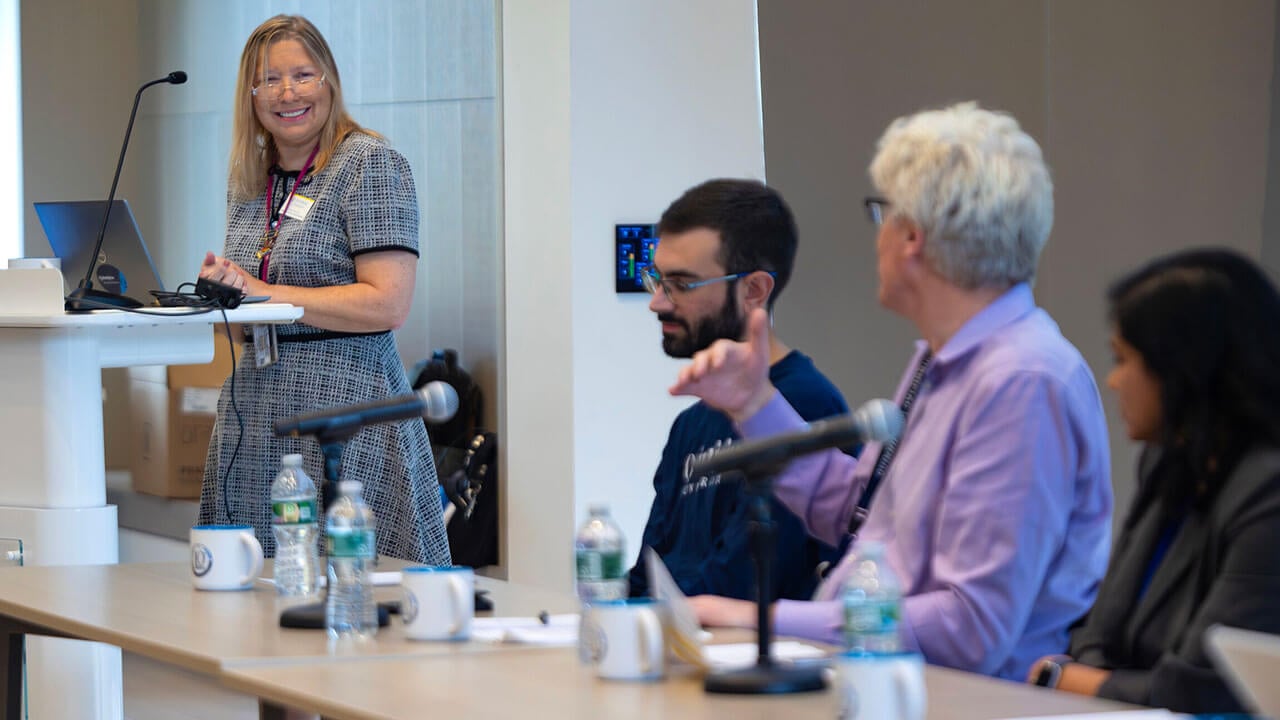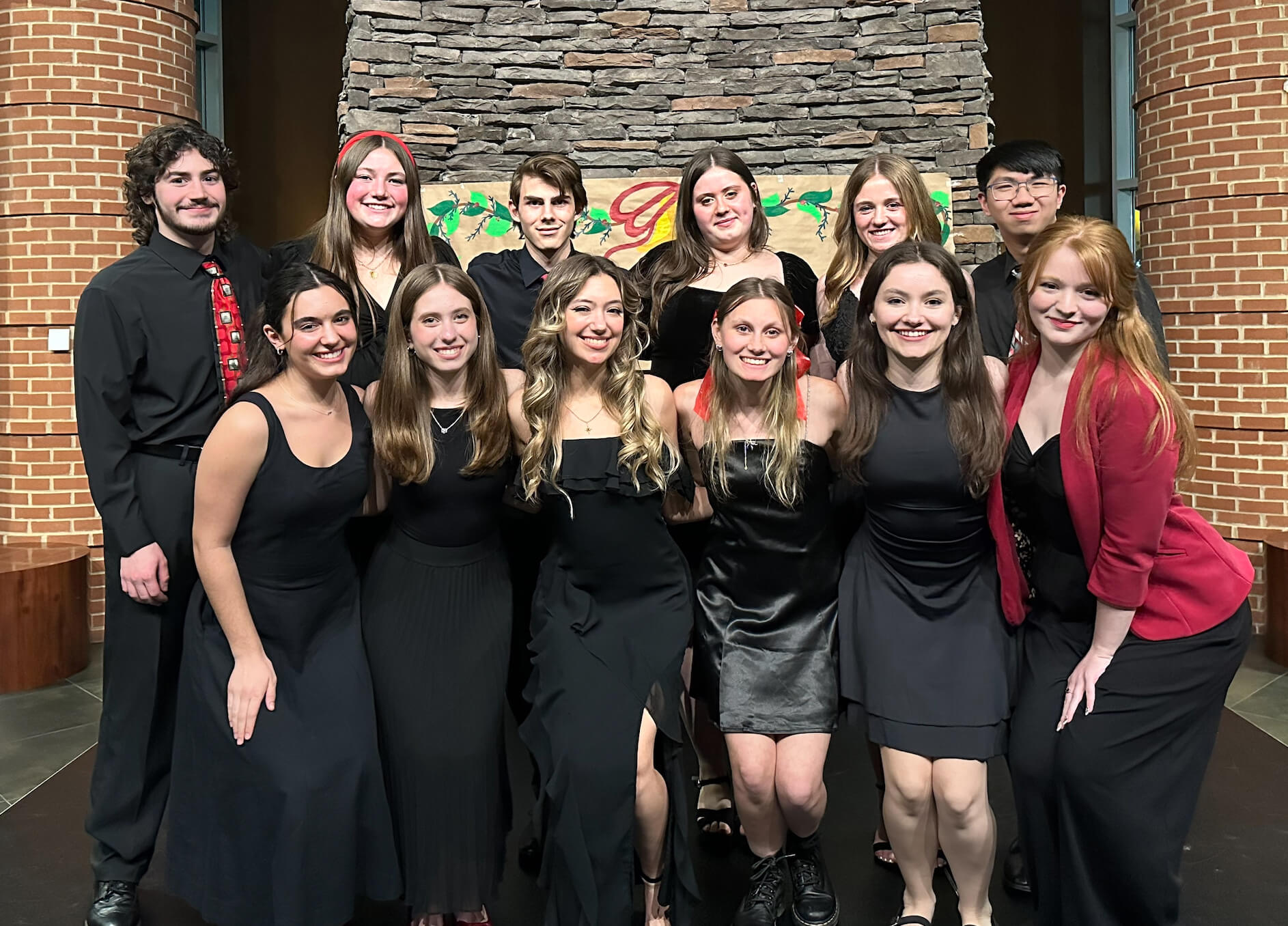
Framed by university musical and theatre performances, a tempting food truck row featuring some of the area’s best eats, and a relaxing biergarten, the Bobcat Weekend showcase helped fuel minds and appetites while engaging hundreds of alumni, family and students.
The expo highlighted scholarly work underway across Quinnipiac’s College of Arts & Sciences (CAS) and eight professional schools, as well as the projects, pursuits, and purpose-driven missions of several student organizations.
Taking aim with one of the university’s solar telescopes, Nicole Granucci, CAS senior instructor of physics, helped guests have a safe look at the sun and take away some information about Quinnipiac’s astronomical research.
Granucci has worked on several astronomy research projects through NASA/IPAC Teacher Achieve Research Program and has taken students to American Astronomical Society meetings to present posters in astronomy research.
She’s also advisor to QUASAR, the Quinnipiac University Astronomical Society for Advancement and Research. QUASAR helps to educate students about astronomy and helps them to enhance the local community with special events offering glimpses of celestial objects using the university’s large, high-tech telescopes. QUASAR currently has about 20 members.
“It’s great to be out here, because many people are not familiar with our small, but mighty astronomer group,” said Granucci. “We also run astronomy research at Quinnipiac, including doing some pretty awesome stuff with imaging.”
At their aptly titled “Skeletons in Our Closet” display, students working with Jaime Ullinger, a CAS anthropology professor and bioarcheologist, displayed various skeletal examples and shared what can be learned from forensic anthropology and forensic science by unearthing the stories of bones.
“We’re also talking about Quinnipiac’s Bioanthropology Research Institute, which allows students to do research on campus in biological anthropology, bioarcheology and archeology; but also use CT scans and X-ray working with Quinnipiac’s diagnostic imaging and radiologic science programs,” said Ullinger.
Biology major and forensic science minor Isabella Onimus ’26, MS ’27 is one of several students working with Ullinger at the Bioanthropology Research Institute. The interdisciplinary hub links the study of biology, anthropology, archaeology and paleontology.
“I really like working with like-minded people,” said Onimus. “I’ve been talking to people about what we do, and I don’t think they were expecting to find out we have a forensic science minor at Quinnipiac. I think people are surprised by the diversity of all the programs and the minors as well.”
Bobcat dad Julio Vallejo said the forensics presentation was inspiring.
“I thought it was really impressive. I learned a lot of things,” Vallejo said.
As a technician and electrical mechanic, Vallejo was also drawn to another eye-catching expo display, an off-road vehicle designed and built by engineering students at the School of Computing & Engineering. The rugged, light-weight steel Baja racer was constructed by Quinnipiac’s Baja Society of Automotive Engineers (SAE) Club.
Vallejo spent some time talking with mechanical engineering major Emmett Leary, ’27, who joined the Quinnipiac’s Baja SAE club this year.
“I joined the club because I thought building your own car was really cool,” said Leary. “A lot of people on the team are mechanical engineers, so we know each other, and it’s kind of fun to get to hang out and build your own car.”
“They’re really advanced,” Vallejo said. “The job they’re doing is really good. I’ve seen many, many welds, and this is perfect. It looks like it was done by a person with 30 years’ experience.”
The Vallejo family was visiting the showcase with their Bobcat, pre-med track biomedical sciences major Camila Vallejo, ’28. She checked out advancements in medical technology shared by students and faculty of Frank H. Netter School of Medicine, and explored some hands-on activities set up by the School of Nursing.
“I was listening to some breath sounds and some heart sounds and I also took blood pressure,” said Vallejo. “I used to help out with an EMT course, so I had a little bit of background information about it. It was really cool to be able to apply my knowledge and ask some questions.”
In a tree-shaded spot on the Quad, Clinical Assistant Professor of Nursing Gina Robertiello helped provide manikin simulation exercises, giving guests a view into the School of Nursing’s state-of-the-art tech used by students.
Robertiello said new learning, skills acquisition, and critical thinking research is currently underway at the school, thanks to a recent and generous grant from the Eva Stearns Faulkner Foundation.
“We’ve been using those funds to do simulation research,” said Robertiello. “We did two studies this past summer, and this semester we have two more studies going on. One is related to palliative nursing, and another is regarding psychological safety during simulations.”
Civil engineering major Anthony Votto, ’27, was also discussing safety as he talked to visitors about the impressive, scaled-down steel bridge section constructed by Quinnipiac's Student Steel Bridge Competition Team. Established last year, the team’s bridge segment made an impressive debut at the 2025 American Society of Civil Engineers (ASCE) Northeast Regional Symposium, winning first place for aesthetics.
“We spend the beginning of the year designing the bridge, then we work on fabrication and building so we’re ready for the competition in the spring,” said Votto. “I think a lot of people that have come by to check it out have been very interested to see that we have this club here. It makes me pretty proud and excited to show off the bridge and support Quinnipiac.”
School of Education students were also proud to share the projects they are developing as part of their Quinnipiac academic journey. Kayla Dupper, ’26, MAT ’27, was excited to let others know how Quinnipiac supported her special education and teaching goals.
“I think they’re surprised to hear about the 4+1 program that I’m in. What sold it to me is you get everything done in your four years; and you get two years of field study experience and then your master’s year you get your full student-teaching experience. You also have all the guidance of the School of Education - my program is fully online, and the professors are always there for me,” said Dupper.
In this Article
Stay Connected
Get the latest news and events sent right to your email by subscribing to Quinnipiac Today.
Subscribe